
How it works
For Business
Join Mind Tools
Article • 10 min read

Case Study-Based Learning
Enhancing learning through immediate application.
By the Mind Tools Content Team

If you've ever tried to learn a new concept, you probably appreciate that "knowing" is different from "doing." When you have an opportunity to apply your knowledge, the lesson typically becomes much more real.
Adults often learn differently from children, and we have different motivations for learning. Typically, we learn new skills because we want to. We recognize the need to learn and grow, and we usually need – or want – to apply our newfound knowledge soon after we've learned it.
A popular theory of adult learning is andragogy (the art and science of leading man, or adults), as opposed to the better-known pedagogy (the art and science of leading children). Malcolm Knowles , a professor of adult education, was considered the father of andragogy, which is based on four key observations of adult learners:
- Adults learn best if they know why they're learning something.
- Adults often learn best through experience.
- Adults tend to view learning as an opportunity to solve problems.
- Adults learn best when the topic is relevant to them and immediately applicable.
This means that you'll get the best results with adults when they're fully involved in the learning experience. Give an adult an opportunity to practice and work with a new skill, and you have a solid foundation for high-quality learning that the person will likely retain over time.
So, how can you best use these adult learning principles in your training and development efforts? Case studies provide an excellent way of practicing and applying new concepts. As such, they're very useful tools in adult learning, and it's important to understand how to get the maximum value from them.
What Is a Case Study?
Case studies are a form of problem-based learning, where you present a situation that needs a resolution. A typical business case study is a detailed account, or story, of what happened in a particular company, industry, or project over a set period of time.
The learner is given details about the situation, often in a historical context. The key players are introduced. Objectives and challenges are outlined. This is followed by specific examples and data, which the learner then uses to analyze the situation, determine what happened, and make recommendations.
The depth of a case depends on the lesson being taught. A case study can be two pages, 20 pages, or more. A good case study makes the reader think critically about the information presented, and then develop a thorough assessment of the situation, leading to a well-thought-out solution or recommendation.
Why Use a Case Study?
Case studies are a great way to improve a learning experience, because they get the learner involved, and encourage immediate use of newly acquired skills.
They differ from lectures or assigned readings because they require participation and deliberate application of a broad range of skills. For example, if you study financial analysis through straightforward learning methods, you may have to calculate and understand a long list of financial ratios (don't worry if you don't know what these are). Likewise, you may be given a set of financial statements to complete a ratio analysis. But until you put the exercise into context, you may not really know why you're doing the analysis.
With a case study, however, you might explore whether a bank should provide financing to a borrower, or whether a company is about to make a good acquisition. Suddenly, the act of calculating ratios becomes secondary – it's more important to understand what the ratios tell you. This is how case studies can make the difference between knowing what to do, and knowing how, when, and why to do it.
Then, what really separates case studies from other practical forms of learning – like scenarios and simulations – is the ability to compare the learner's recommendations with what actually happened. When you know what really happened, it's much easier to evaluate the "correctness" of the answers given.
When to Use a Case Study
As you can see, case studies are powerful and effective training tools. They also work best with practical, applied training, so make sure you use them appropriately.
Remember these tips:
- Case studies tend to focus on why and how to apply a skill or concept, not on remembering facts and details. Use case studies when understanding the concept is more important than memorizing correct responses.
- Case studies are great team-building opportunities. When a team gets together to solve a case, they'll have to work through different opinions, methods, and perspectives.
- Use case studies to build problem-solving skills, particularly those that are valuable when applied, but are likely to be used infrequently. This helps people get practice with these skills that they might not otherwise get.
- Case studies can be used to evaluate past problem solving. People can be asked what they'd do in that situation, and think about what could have been done differently.
Ensuring Maximum Value From Case Studies
The first thing to remember is that you already need to have enough theoretical knowledge to handle the questions and challenges in the case study. Otherwise, it can be like trying to solve a puzzle with some of the pieces missing.
Here are some additional tips for how to approach a case study. Depending on the exact nature of the case, some tips will be more relevant than others.
- Read the case at least three times before you start any analysis. Case studies usually have lots of details, and it's easy to miss something in your first, or even second, reading.
- Once you're thoroughly familiar with the case, note the facts. Identify which are relevant to the tasks you've been assigned. In a good case study, there are often many more facts than you need for your analysis.
- If the case contains large amounts of data, analyze this data for relevant trends. For example, have sales dropped steadily, or was there an unexpected high or low point?
- If the case involves a description of a company's history, find the key events, and consider how they may have impacted the current situation.
- Consider using techniques like SWOT analysis and Porter's Five Forces Analysis to understand the organization's strategic position.
- Stay with the facts when you draw conclusions. These include facts given in the case as well as established facts about the environmental context. Don't rely on personal opinions when you put together your answers.
Writing a Case Study
You may have to write a case study yourself. These are complex documents that take a while to research and compile. The quality of the case study influences the quality of the analysis. Here are some tips if you want to write your own:
- Write your case study as a structured story. The goal is to capture an interesting situation or challenge and then bring it to life with words and information. You want the reader to feel a part of what's happening.
- Present information so that a "right" answer isn't obvious. The goal is to develop the learner's ability to analyze and assess, not necessarily to make the same decision as the people in the actual case.
- Do background research to fully understand what happened and why. You may need to talk to key stakeholders to get their perspectives as well.
- Determine the key challenge. What needs to be resolved? The case study should focus on one main question or issue.
- Define the context. Talk about significant events leading up to the situation. What organizational factors are important for understanding the problem and assessing what should be done? Include cultural factors where possible.
- Identify key decision makers and stakeholders. Describe their roles and perspectives, as well as their motivations and interests.
- Make sure that you provide the right data to allow people to reach appropriate conclusions.
- Make sure that you have permission to use any information you include.
A typical case study structure includes these elements:
- Executive summary. Define the objective, and state the key challenge.
- Opening paragraph. Capture the reader's interest.
- Scope. Describe the background, context, approach, and issues involved.
- Presentation of facts. Develop an objective picture of what's happening.
- Description of key issues. Present viewpoints, decisions, and interests of key parties.
Because case studies have proved to be such effective teaching tools, many are already written. Some excellent sources of free cases are The Times 100 , CasePlace.org , and Schroeder & Schroeder Inc . You can often search for cases by topic or industry. These cases are expertly prepared, based mostly on real situations, and used extensively in business schools to teach management concepts.
Case studies are a great way to improve learning and training. They provide learners with an opportunity to solve a problem by applying what they know.
There are no unpleasant consequences for getting it "wrong," and cases give learners a much better understanding of what they really know and what they need to practice.
Case studies can be used in many ways, as team-building tools, and for skill development. You can write your own case study, but a large number are already prepared. Given the enormous benefits of practical learning applications like this, case studies are definitely something to consider adding to your next training session.
Knowles, M. (1973). 'The Adult Learner: A Neglected Species [online].' Available here .
You've accessed 1 of your 2 free resources.
Get unlimited access
Discover more content
How to Guides
Creating a Sales Budget
This Worked Scenario Will Help You Get to Grips With Formulating a Basic Sales Budget
The Holmes and Rahe Stress Scale
A Self-Assessment to Understand the Impact of Long-Term Stress
Add comment
Comments (0)
Be the first to comment!

Team Management
Learn the key aspects of managing a team, from building and developing your team, to working with different types of teams, and troubleshooting common problems.
Sign-up to our newsletter
Subscribing to the Mind Tools newsletter will keep you up-to-date with our latest updates and newest resources.
Subscribe now
Business Skills
Personal Development
Leadership and Management
Member Extras
Most Popular
Newest Releases

SWOT Analysis

SMART Goals
Mind Tools Store
About Mind Tools Content
Discover something new today
How to stop procrastinating.
Overcoming the Habit of Delaying Important Tasks
What Is Time Management?
Working Smarter to Enhance Productivity
How Emotionally Intelligent Are You?
Boosting Your People Skills
Self-Assessment
What's Your Leadership Style?
Learn About the Strengths and Weaknesses of the Way You Like to Lead
Recommended for you
Soar analysis.
Focusing on the Positives and Opening up Opportunities
Business Operations and Process Management
Strategy Tools
Customer Service
Business Ethics and Values
Handling Information and Data
Project Management
Knowledge Management
Self-Development and Goal Setting
Time Management
Presentation Skills
Learning Skills
Career Skills
Communication Skills
Negotiation, Persuasion and Influence
Working With Others
Difficult Conversations
Creativity Tools
Self-Management
Work-Life Balance
Stress Management and Wellbeing
Coaching and Mentoring
Change Management
Managing Conflict
Delegation and Empowerment
Performance Management
Leadership Skills
Developing Your Team
Talent Management
Problem Solving
Decision Making
Member Podcast
Problem-Solving in Business: CASE STUDIES
- ABOUT THIS LIBGUIDE
- PROBLEM-SOLVING DEFINED AND WHY IT IS IMPORTANT
- SKILLS AND QUALIFICATIONS NEEDED IN PROBLEM-SOLVING
- PROBLEM-SOLVING STEPS
- CASE STUDIES
- MORE HELPFUL RESOURCES
- << Previous: PROBLEM-SOLVING STEPS
- Next: MORE HELPFUL RESOURCES >>
- Last Updated: Mar 23, 2024 4:47 PM
- URL: https://libguides.nypl.org/problem_solving_in_business
Do Your Students Know How to Analyze a Case—Really?
Explore more.
- Case Teaching
- Student Engagement
J ust as actors, athletes, and musicians spend thousands of hours practicing their craft, business students benefit from practicing their critical-thinking and decision-making skills. Students, however, often have limited exposure to real-world problem-solving scenarios; they need more opportunities to practice tackling tough business problems and deciding on—and executing—the best solutions.
To ensure students have ample opportunity to develop these critical-thinking and decision-making skills, we believe business faculty should shift from teaching mostly principles and ideas to mostly applications and practices. And in doing so, they should emphasize the case method, which simulates real-world management challenges and opportunities for students.
To help educators facilitate this shift and help students get the most out of case-based learning, we have developed a framework for analyzing cases. We call it PACADI (Problem, Alternatives, Criteria, Analysis, Decision, Implementation); it can improve learning outcomes by helping students better solve and analyze business problems, make decisions, and develop and implement strategy. Here, we’ll explain why we developed this framework, how it works, and what makes it an effective learning tool.
The Case for Cases: Helping Students Think Critically
Business students must develop critical-thinking and analytical skills, which are essential to their ability to make good decisions in functional areas such as marketing, finance, operations, and information technology, as well as to understand the relationships among these functions. For example, the decisions a marketing manager must make include strategic planning (segments, products, and channels); execution (digital messaging, media, branding, budgets, and pricing); and operations (integrated communications and technologies), as well as how to implement decisions across functional areas.
Faculty can use many types of cases to help students develop these skills. These include the prototypical “paper cases”; live cases , which feature guest lecturers such as entrepreneurs or corporate leaders and on-site visits; and multimedia cases , which immerse students into real situations. Most cases feature an explicit or implicit decision that a protagonist—whether it is an individual, a group, or an organization—must make.
For students new to learning by the case method—and even for those with case experience—some common issues can emerge; these issues can sometimes be a barrier for educators looking to ensure the best possible outcomes in their case classrooms. Unsure of how to dig into case analysis on their own, students may turn to the internet or rely on former students for “answers” to assigned cases. Or, when assigned to provide answers to assignment questions in teams, students might take a divide-and-conquer approach but not take the time to regroup and provide answers that are consistent with one other.
To help address these issues, which we commonly experienced in our classes, we wanted to provide our students with a more structured approach for how they analyze cases—and to really think about making decisions from the protagonists’ point of view. We developed the PACADI framework to address this need.
PACADI: A Six-Step Decision-Making Approach
The PACADI framework is a six-step decision-making approach that can be used in lieu of traditional end-of-case questions. It offers a structured, integrated, and iterative process that requires students to analyze case information, apply business concepts to derive valuable insights, and develop recommendations based on these insights.
Prior to beginning a PACADI assessment, which we’ll outline here, students should first prepare a two-paragraph summary—a situation analysis—that highlights the key case facts. Then, we task students with providing a five-page PACADI case analysis (excluding appendices) based on the following six steps.
Step 1: Problem definition. What is the major challenge, problem, opportunity, or decision that has to be made? If there is more than one problem, choose the most important one. Often when solving the key problem, other issues will surface and be addressed. The problem statement may be framed as a question; for example, How can brand X improve market share among millennials in Canada? Usually the problem statement has to be re-written several times during the analysis of a case as students peel back the layers of symptoms or causation.
Step 2: Alternatives. Identify in detail the strategic alternatives to address the problem; three to five options generally work best. Alternatives should be mutually exclusive, realistic, creative, and feasible given the constraints of the situation. Doing nothing or delaying the decision to a later date are not considered acceptable alternatives.
Step 3: Criteria. What are the key decision criteria that will guide decision-making? In a marketing course, for example, these may include relevant marketing criteria such as segmentation, positioning, advertising and sales, distribution, and pricing. Financial criteria useful in evaluating the alternatives should be included—for example, income statement variables, customer lifetime value, payback, etc. Students must discuss their rationale for selecting the decision criteria and the weights and importance for each factor.
Step 4: Analysis. Provide an in-depth analysis of each alternative based on the criteria chosen in step three. Decision tables using criteria as columns and alternatives as rows can be helpful. The pros and cons of the various choices as well as the short- and long-term implications of each may be evaluated. Best, worst, and most likely scenarios can also be insightful.
Step 5: Decision. Students propose their solution to the problem. This decision is justified based on an in-depth analysis. Explain why the recommendation made is the best fit for the criteria.
Step 6: Implementation plan. Sound business decisions may fail due to poor execution. To enhance the likeliness of a successful project outcome, students describe the key steps (activities) to implement the recommendation, timetable, projected costs, expected competitive reaction, success metrics, and risks in the plan.
“Students note that using the PACADI framework yields ‘aha moments’—they learned something surprising in the case that led them to think differently about the problem and their proposed solution.”
PACADI’s Benefits: Meaningfully and Thoughtfully Applying Business Concepts
The PACADI framework covers all of the major elements of business decision-making, including implementation, which is often overlooked. By stepping through the whole framework, students apply relevant business concepts and solve management problems via a systematic, comprehensive approach; they’re far less likely to surface piecemeal responses.
As students explore each part of the framework, they may realize that they need to make changes to a previous step. For instance, when working on implementation, students may realize that the alternative they selected cannot be executed or will not be profitable, and thus need to rethink their decision. Or, they may discover that the criteria need to be revised since the list of decision factors they identified is incomplete (for example, the factors may explain key marketing concerns but fail to address relevant financial considerations) or is unrealistic (for example, they suggest a 25 percent increase in revenues without proposing an increased promotional budget).
In addition, the PACADI framework can be used alongside quantitative assignments, in-class exercises, and business and management simulations. The structured, multi-step decision framework encourages careful and sequential analysis to solve business problems. Incorporating PACADI as an overarching decision-making method across different projects will ultimately help students achieve desired learning outcomes. As a practical “beyond-the-classroom” tool, the PACADI framework is not a contrived course assignment; it reflects the decision-making approach that managers, executives, and entrepreneurs exercise daily. Case analysis introduces students to the real-world process of making business decisions quickly and correctly, often with limited information. This framework supplies an organized and disciplined process that students can readily defend in writing and in class discussions.
PACADI in Action: An Example
Here’s an example of how students used the PACADI framework for a recent case analysis on CVS, a large North American drugstore chain.
The CVS Prescription for Customer Value*
PACADI Stage
Summary Response
How should CVS Health evolve from the “drugstore of your neighborhood” to the “drugstore of your future”?
Alternatives
A1. Kaizen (continuous improvement)
A2. Product development
A3. Market development
A4. Personalization (micro-targeting)
Criteria (include weights)
C1. Customer value: service, quality, image, and price (40%)
C2. Customer obsession (20%)
C3. Growth through related businesses (20%)
C4. Customer retention and customer lifetime value (20%)
Each alternative was analyzed by each criterion using a Customer Value Assessment Tool
Alternative 4 (A4): Personalization was selected. This is operationalized via: segmentation—move toward segment-of-1 marketing; geodemographics and lifestyle emphasis; predictive data analysis; relationship marketing; people, principles, and supply chain management; and exceptional customer service.
Implementation
Partner with leading medical school
Curbside pick-up
Pet pharmacy
E-newsletter for customers and employees
Employee incentive program
CVS beauty days
Expand to Latin America and Caribbean
Healthier/happier corner
Holiday toy drives/community outreach
*Source: A. Weinstein, Y. Rodriguez, K. Sims, R. Vergara, “The CVS Prescription for Superior Customer Value—A Case Study,” Back to the Future: Revisiting the Foundations of Marketing from Society for Marketing Advances, West Palm Beach, FL (November 2, 2018).
Results of Using the PACADI Framework
When faculty members at our respective institutions at Nova Southeastern University (NSU) and the University of North Carolina Wilmington have used the PACADI framework, our classes have been more structured and engaging. Students vigorously debate each element of their decision and note that this framework yields an “aha moment”—they learned something surprising in the case that led them to think differently about the problem and their proposed solution.
These lively discussions enhance individual and collective learning. As one external metric of this improvement, we have observed a 2.5 percent increase in student case grade performance at NSU since this framework was introduced.
Tips to Get Started
The PACADI approach works well in in-person, online, and hybrid courses. This is particularly important as more universities have moved to remote learning options. Because students have varied educational and cultural backgrounds, work experience, and familiarity with case analysis, we recommend that faculty members have students work on their first case using this new framework in small teams (two or three students). Additional analyses should then be solo efforts.
To use PACADI effectively in your classroom, we suggest the following:
Advise your students that your course will stress critical thinking and decision-making skills, not just course concepts and theory.
Use a varied mix of case studies. As marketing professors, we often address consumer and business markets; goods, services, and digital commerce; domestic and global business; and small and large companies in a single MBA course.
As a starting point, provide a short explanation (about 20 to 30 minutes) of the PACADI framework with a focus on the conceptual elements. You can deliver this face to face or through videoconferencing.
Give students an opportunity to practice the case analysis methodology via an ungraded sample case study. Designate groups of five to seven students to discuss the case and the six steps in breakout sessions (in class or via Zoom).
Ensure case analyses are weighted heavily as a grading component. We suggest 30–50 percent of the overall course grade.
Once cases are graded, debrief with the class on what they did right and areas needing improvement (30- to 40-minute in-person or Zoom session).
Encourage faculty teams that teach common courses to build appropriate instructional materials, grading rubrics, videos, sample cases, and teaching notes.
When selecting case studies, we have found that the best ones for PACADI analyses are about 15 pages long and revolve around a focal management decision. This length provides adequate depth yet is not protracted. Some of our tested and favorite marketing cases include Brand W , Hubspot , Kraft Foods Canada , TRSB(A) , and Whiskey & Cheddar .

Art Weinstein , Ph.D., is a professor of marketing at Nova Southeastern University, Fort Lauderdale, Florida. He has published more than 80 scholarly articles and papers and eight books on customer-focused marketing strategy. His latest book is Superior Customer Value—Finding and Keeping Customers in the Now Economy . Dr. Weinstein has consulted for many leading technology and service companies.

Herbert V. Brotspies , D.B.A., is an adjunct professor of marketing at Nova Southeastern University. He has over 30 years’ experience as a vice president in marketing, strategic planning, and acquisitions for Fortune 50 consumer products companies working in the United States and internationally. His research interests include return on marketing investment, consumer behavior, business-to-business strategy, and strategic planning.

John T. Gironda , Ph.D., is an assistant professor of marketing at the University of North Carolina Wilmington. His research has been published in Industrial Marketing Management, Psychology & Marketing , and Journal of Marketing Management . He has also presented at major marketing conferences including the American Marketing Association, Academy of Marketing Science, and Society for Marketing Advances.
Related Articles

We use cookies to understand how you use our site and to improve your experience, including personalizing content. Learn More . By continuing to use our site, you accept our use of cookies and revised Privacy Policy .
35 problem-solving techniques and methods for solving complex problems

Design your next session with SessionLab
Join the 150,000+ facilitators using SessionLab.
Recommended Articles
A step-by-step guide to planning a workshop, how to create an unforgettable training session in 8 simple steps, 47 useful online tools for workshop planning and meeting facilitation.
All teams and organizations encounter challenges as they grow. There are problems that might occur for teams when it comes to miscommunication or resolving business-critical issues . You may face challenges around growth , design , user engagement, and even team culture and happiness. In short, problem-solving techniques should be part of every team’s skillset.
Problem-solving methods are primarily designed to help a group or team through a process of first identifying problems and challenges , ideating possible solutions , and then evaluating the most suitable .
Finding effective solutions to complex problems isn’t easy, but by using the right process and techniques, you can help your team be more efficient in the process.
So how do you develop strategies that are engaging, and empower your team to solve problems effectively?
In this blog post, we share a series of problem-solving tools you can use in your next workshop or team meeting. You’ll also find some tips for facilitating the process and how to enable others to solve complex problems.
Let’s get started!
How do you identify problems?
How do you identify the right solution.
- Tips for more effective problem-solving
Complete problem-solving methods
- Problem-solving techniques to identify and analyze problems
- Problem-solving techniques for developing solutions
Problem-solving warm-up activities
Closing activities for a problem-solving process.
Before you can move towards finding the right solution for a given problem, you first need to identify and define the problem you wish to solve.
Here, you want to clearly articulate what the problem is and allow your group to do the same. Remember that everyone in a group is likely to have differing perspectives and alignment is necessary in order to help the group move forward.
Identifying a problem accurately also requires that all members of a group are able to contribute their views in an open and safe manner. It can be scary for people to stand up and contribute, especially if the problems or challenges are emotive or personal in nature. Be sure to try and create a psychologically safe space for these kinds of discussions.
Remember that problem analysis and further discussion are also important. Not taking the time to fully analyze and discuss a challenge can result in the development of solutions that are not fit for purpose or do not address the underlying issue.
Successfully identifying and then analyzing a problem means facilitating a group through activities designed to help them clearly and honestly articulate their thoughts and produce usable insight.
With this data, you might then produce a problem statement that clearly describes the problem you wish to be addressed and also state the goal of any process you undertake to tackle this issue.
Finding solutions is the end goal of any process. Complex organizational challenges can only be solved with an appropriate solution but discovering them requires using the right problem-solving tool.
After you’ve explored a problem and discussed ideas, you need to help a team discuss and choose the right solution. Consensus tools and methods such as those below help a group explore possible solutions before then voting for the best. They’re a great way to tap into the collective intelligence of the group for great results!
Remember that the process is often iterative. Great problem solvers often roadtest a viable solution in a measured way to see what works too. While you might not get the right solution on your first try, the methods below help teams land on the most likely to succeed solution while also holding space for improvement.
Every effective problem solving process begins with an agenda . A well-structured workshop is one of the best methods for successfully guiding a group from exploring a problem to implementing a solution.
In SessionLab, it’s easy to go from an idea to a complete agenda . Start by dragging and dropping your core problem solving activities into place . Add timings, breaks and necessary materials before sharing your agenda with your colleagues.
The resulting agenda will be your guide to an effective and productive problem solving session that will also help you stay organized on the day!

Tips for more effective problem solving
Problem-solving activities are only one part of the puzzle. While a great method can help unlock your team’s ability to solve problems, without a thoughtful approach and strong facilitation the solutions may not be fit for purpose.
Let’s take a look at some problem-solving tips you can apply to any process to help it be a success!
Clearly define the problem
Jumping straight to solutions can be tempting, though without first clearly articulating a problem, the solution might not be the right one. Many of the problem-solving activities below include sections where the problem is explored and clearly defined before moving on.
This is a vital part of the problem-solving process and taking the time to fully define an issue can save time and effort later. A clear definition helps identify irrelevant information and it also ensures that your team sets off on the right track.
Don’t jump to conclusions
It’s easy for groups to exhibit cognitive bias or have preconceived ideas about both problems and potential solutions. Be sure to back up any problem statements or potential solutions with facts, research, and adequate forethought.
The best techniques ask participants to be methodical and challenge preconceived notions. Make sure you give the group enough time and space to collect relevant information and consider the problem in a new way. By approaching the process with a clear, rational mindset, you’ll often find that better solutions are more forthcoming.
Try different approaches
Problems come in all shapes and sizes and so too should the methods you use to solve them. If you find that one approach isn’t yielding results and your team isn’t finding different solutions, try mixing it up. You’ll be surprised at how using a new creative activity can unblock your team and generate great solutions.
Don’t take it personally
Depending on the nature of your team or organizational problems, it’s easy for conversations to get heated. While it’s good for participants to be engaged in the discussions, ensure that emotions don’t run too high and that blame isn’t thrown around while finding solutions.
You’re all in it together, and even if your team or area is seeing problems, that isn’t necessarily a disparagement of you personally. Using facilitation skills to manage group dynamics is one effective method of helping conversations be more constructive.
Get the right people in the room
Your problem-solving method is often only as effective as the group using it. Getting the right people on the job and managing the number of people present is important too!
If the group is too small, you may not get enough different perspectives to effectively solve a problem. If the group is too large, you can go round and round during the ideation stages.
Creating the right group makeup is also important in ensuring you have the necessary expertise and skillset to both identify and follow up on potential solutions. Carefully consider who to include at each stage to help ensure your problem-solving method is followed and positioned for success.
Document everything
The best solutions can take refinement, iteration, and reflection to come out. Get into a habit of documenting your process in order to keep all the learnings from the session and to allow ideas to mature and develop. Many of the methods below involve the creation of documents or shared resources. Be sure to keep and share these so everyone can benefit from the work done!
Bring a facilitator
Facilitation is all about making group processes easier. With a subject as potentially emotive and important as problem-solving, having an impartial third party in the form of a facilitator can make all the difference in finding great solutions and keeping the process moving. Consider bringing a facilitator to your problem-solving session to get better results and generate meaningful solutions!
Develop your problem-solving skills
It takes time and practice to be an effective problem solver. While some roles or participants might more naturally gravitate towards problem-solving, it can take development and planning to help everyone create better solutions.
You might develop a training program, run a problem-solving workshop or simply ask your team to practice using the techniques below. Check out our post on problem-solving skills to see how you and your group can develop the right mental process and be more resilient to issues too!
Design a great agenda
Workshops are a great format for solving problems. With the right approach, you can focus a group and help them find the solutions to their own problems. But designing a process can be time-consuming and finding the right activities can be difficult.
Check out our workshop planning guide to level-up your agenda design and start running more effective workshops. Need inspiration? Check out templates designed by expert facilitators to help you kickstart your process!
In this section, we’ll look at in-depth problem-solving methods that provide a complete end-to-end process for developing effective solutions. These will help guide your team from the discovery and definition of a problem through to delivering the right solution.
If you’re looking for an all-encompassing method or problem-solving model, these processes are a great place to start. They’ll ask your team to challenge preconceived ideas and adopt a mindset for solving problems more effectively.
- Six Thinking Hats
- Lightning Decision Jam
- Problem Definition Process
- Discovery & Action Dialogue
Design Sprint 2.0
- Open Space Technology
1. Six Thinking Hats
Individual approaches to solving a problem can be very different based on what team or role an individual holds. It can be easy for existing biases or perspectives to find their way into the mix, or for internal politics to direct a conversation.
Six Thinking Hats is a classic method for identifying the problems that need to be solved and enables your team to consider them from different angles, whether that is by focusing on facts and data, creative solutions, or by considering why a particular solution might not work.
Like all problem-solving frameworks, Six Thinking Hats is effective at helping teams remove roadblocks from a conversation or discussion and come to terms with all the aspects necessary to solve complex problems.
2. Lightning Decision Jam
Featured courtesy of Jonathan Courtney of AJ&Smart Berlin, Lightning Decision Jam is one of those strategies that should be in every facilitation toolbox. Exploring problems and finding solutions is often creative in nature, though as with any creative process, there is the potential to lose focus and get lost.
Unstructured discussions might get you there in the end, but it’s much more effective to use a method that creates a clear process and team focus.
In Lightning Decision Jam, participants are invited to begin by writing challenges, concerns, or mistakes on post-its without discussing them before then being invited by the moderator to present them to the group.
From there, the team vote on which problems to solve and are guided through steps that will allow them to reframe those problems, create solutions and then decide what to execute on.
By deciding the problems that need to be solved as a team before moving on, this group process is great for ensuring the whole team is aligned and can take ownership over the next stages.
Lightning Decision Jam (LDJ) #action #decision making #problem solving #issue analysis #innovation #design #remote-friendly The problem with anything that requires creative thinking is that it’s easy to get lost—lose focus and fall into the trap of having useless, open-ended, unstructured discussions. Here’s the most effective solution I’ve found: Replace all open, unstructured discussion with a clear process. What to use this exercise for: Anything which requires a group of people to make decisions, solve problems or discuss challenges. It’s always good to frame an LDJ session with a broad topic, here are some examples: The conversion flow of our checkout Our internal design process How we organise events Keeping up with our competition Improving sales flow
3. Problem Definition Process
While problems can be complex, the problem-solving methods you use to identify and solve those problems can often be simple in design.
By taking the time to truly identify and define a problem before asking the group to reframe the challenge as an opportunity, this method is a great way to enable change.
Begin by identifying a focus question and exploring the ways in which it manifests before splitting into five teams who will each consider the problem using a different method: escape, reversal, exaggeration, distortion or wishful. Teams develop a problem objective and create ideas in line with their method before then feeding them back to the group.
This method is great for enabling in-depth discussions while also creating space for finding creative solutions too!
Problem Definition #problem solving #idea generation #creativity #online #remote-friendly A problem solving technique to define a problem, challenge or opportunity and to generate ideas.
4. The 5 Whys
Sometimes, a group needs to go further with their strategies and analyze the root cause at the heart of organizational issues. An RCA or root cause analysis is the process of identifying what is at the heart of business problems or recurring challenges.
The 5 Whys is a simple and effective method of helping a group go find the root cause of any problem or challenge and conduct analysis that will deliver results.
By beginning with the creation of a problem statement and going through five stages to refine it, The 5 Whys provides everything you need to truly discover the cause of an issue.
The 5 Whys #hyperisland #innovation This simple and powerful method is useful for getting to the core of a problem or challenge. As the title suggests, the group defines a problems, then asks the question “why” five times, often using the resulting explanation as a starting point for creative problem solving.
5. World Cafe
World Cafe is a simple but powerful facilitation technique to help bigger groups to focus their energy and attention on solving complex problems.
World Cafe enables this approach by creating a relaxed atmosphere where participants are able to self-organize and explore topics relevant and important to them which are themed around a central problem-solving purpose. Create the right atmosphere by modeling your space after a cafe and after guiding the group through the method, let them take the lead!
Making problem-solving a part of your organization’s culture in the long term can be a difficult undertaking. More approachable formats like World Cafe can be especially effective in bringing people unfamiliar with workshops into the fold.
World Cafe #hyperisland #innovation #issue analysis World Café is a simple yet powerful method, originated by Juanita Brown, for enabling meaningful conversations driven completely by participants and the topics that are relevant and important to them. Facilitators create a cafe-style space and provide simple guidelines. Participants then self-organize and explore a set of relevant topics or questions for conversation.
6. Discovery & Action Dialogue (DAD)
One of the best approaches is to create a safe space for a group to share and discover practices and behaviors that can help them find their own solutions.
With DAD, you can help a group choose which problems they wish to solve and which approaches they will take to do so. It’s great at helping remove resistance to change and can help get buy-in at every level too!
This process of enabling frontline ownership is great in ensuring follow-through and is one of the methods you will want in your toolbox as a facilitator.
Discovery & Action Dialogue (DAD) #idea generation #liberating structures #action #issue analysis #remote-friendly DADs make it easy for a group or community to discover practices and behaviors that enable some individuals (without access to special resources and facing the same constraints) to find better solutions than their peers to common problems. These are called positive deviant (PD) behaviors and practices. DADs make it possible for people in the group, unit, or community to discover by themselves these PD practices. DADs also create favorable conditions for stimulating participants’ creativity in spaces where they can feel safe to invent new and more effective practices. Resistance to change evaporates as participants are unleashed to choose freely which practices they will adopt or try and which problems they will tackle. DADs make it possible to achieve frontline ownership of solutions.
7. Design Sprint 2.0
Want to see how a team can solve big problems and move forward with prototyping and testing solutions in a few days? The Design Sprint 2.0 template from Jake Knapp, author of Sprint, is a complete agenda for a with proven results.
Developing the right agenda can involve difficult but necessary planning. Ensuring all the correct steps are followed can also be stressful or time-consuming depending on your level of experience.
Use this complete 4-day workshop template if you are finding there is no obvious solution to your challenge and want to focus your team around a specific problem that might require a shortcut to launching a minimum viable product or waiting for the organization-wide implementation of a solution.
8. Open space technology
Open space technology- developed by Harrison Owen – creates a space where large groups are invited to take ownership of their problem solving and lead individual sessions. Open space technology is a great format when you have a great deal of expertise and insight in the room and want to allow for different takes and approaches on a particular theme or problem you need to be solved.
Start by bringing your participants together to align around a central theme and focus their efforts. Explain the ground rules to help guide the problem-solving process and then invite members to identify any issue connecting to the central theme that they are interested in and are prepared to take responsibility for.
Once participants have decided on their approach to the core theme, they write their issue on a piece of paper, announce it to the group, pick a session time and place, and post the paper on the wall. As the wall fills up with sessions, the group is then invited to join the sessions that interest them the most and which they can contribute to, then you’re ready to begin!
Everyone joins the problem-solving group they’ve signed up to, record the discussion and if appropriate, findings can then be shared with the rest of the group afterward.
Open Space Technology #action plan #idea generation #problem solving #issue analysis #large group #online #remote-friendly Open Space is a methodology for large groups to create their agenda discerning important topics for discussion, suitable for conferences, community gatherings and whole system facilitation
Techniques to identify and analyze problems
Using a problem-solving method to help a team identify and analyze a problem can be a quick and effective addition to any workshop or meeting.
While further actions are always necessary, you can generate momentum and alignment easily, and these activities are a great place to get started.
We’ve put together this list of techniques to help you and your team with problem identification, analysis, and discussion that sets the foundation for developing effective solutions.
Let’s take a look!
- The Creativity Dice
- Fishbone Analysis
- Problem Tree
- SWOT Analysis
- Agreement-Certainty Matrix
- The Journalistic Six
- LEGO Challenge
- What, So What, Now What?
- Journalists
Individual and group perspectives are incredibly important, but what happens if people are set in their minds and need a change of perspective in order to approach a problem more effectively?
Flip It is a method we love because it is both simple to understand and run, and allows groups to understand how their perspectives and biases are formed.
Participants in Flip It are first invited to consider concerns, issues, or problems from a perspective of fear and write them on a flip chart. Then, the group is asked to consider those same issues from a perspective of hope and flip their understanding.
No problem and solution is free from existing bias and by changing perspectives with Flip It, you can then develop a problem solving model quickly and effectively.
Flip It! #gamestorming #problem solving #action Often, a change in a problem or situation comes simply from a change in our perspectives. Flip It! is a quick game designed to show players that perspectives are made, not born.
10. The Creativity Dice
One of the most useful problem solving skills you can teach your team is of approaching challenges with creativity, flexibility, and openness. Games like The Creativity Dice allow teams to overcome the potential hurdle of too much linear thinking and approach the process with a sense of fun and speed.
In The Creativity Dice, participants are organized around a topic and roll a dice to determine what they will work on for a period of 3 minutes at a time. They might roll a 3 and work on investigating factual information on the chosen topic. They might roll a 1 and work on identifying the specific goals, standards, or criteria for the session.
Encouraging rapid work and iteration while asking participants to be flexible are great skills to cultivate. Having a stage for idea incubation in this game is also important. Moments of pause can help ensure the ideas that are put forward are the most suitable.
The Creativity Dice #creativity #problem solving #thiagi #issue analysis Too much linear thinking is hazardous to creative problem solving. To be creative, you should approach the problem (or the opportunity) from different points of view. You should leave a thought hanging in mid-air and move to another. This skipping around prevents premature closure and lets your brain incubate one line of thought while you consciously pursue another.
11. Fishbone Analysis
Organizational or team challenges are rarely simple, and it’s important to remember that one problem can be an indication of something that goes deeper and may require further consideration to be solved.
Fishbone Analysis helps groups to dig deeper and understand the origins of a problem. It’s a great example of a root cause analysis method that is simple for everyone on a team to get their head around.
Participants in this activity are asked to annotate a diagram of a fish, first adding the problem or issue to be worked on at the head of a fish before then brainstorming the root causes of the problem and adding them as bones on the fish.
Using abstractions such as a diagram of a fish can really help a team break out of their regular thinking and develop a creative approach.
Fishbone Analysis #problem solving ##root cause analysis #decision making #online facilitation A process to help identify and understand the origins of problems, issues or observations.
12. Problem Tree
Encouraging visual thinking can be an essential part of many strategies. By simply reframing and clarifying problems, a group can move towards developing a problem solving model that works for them.
In Problem Tree, groups are asked to first brainstorm a list of problems – these can be design problems, team problems or larger business problems – and then organize them into a hierarchy. The hierarchy could be from most important to least important or abstract to practical, though the key thing with problem solving games that involve this aspect is that your group has some way of managing and sorting all the issues that are raised.
Once you have a list of problems that need to be solved and have organized them accordingly, you’re then well-positioned for the next problem solving steps.
Problem tree #define intentions #create #design #issue analysis A problem tree is a tool to clarify the hierarchy of problems addressed by the team within a design project; it represents high level problems or related sublevel problems.
13. SWOT Analysis
Chances are you’ve heard of the SWOT Analysis before. This problem-solving method focuses on identifying strengths, weaknesses, opportunities, and threats is a tried and tested method for both individuals and teams.
Start by creating a desired end state or outcome and bare this in mind – any process solving model is made more effective by knowing what you are moving towards. Create a quadrant made up of the four categories of a SWOT analysis and ask participants to generate ideas based on each of those quadrants.
Once you have those ideas assembled in their quadrants, cluster them together based on their affinity with other ideas. These clusters are then used to facilitate group conversations and move things forward.
SWOT analysis #gamestorming #problem solving #action #meeting facilitation The SWOT Analysis is a long-standing technique of looking at what we have, with respect to the desired end state, as well as what we could improve on. It gives us an opportunity to gauge approaching opportunities and dangers, and assess the seriousness of the conditions that affect our future. When we understand those conditions, we can influence what comes next.
14. Agreement-Certainty Matrix
Not every problem-solving approach is right for every challenge, and deciding on the right method for the challenge at hand is a key part of being an effective team.
The Agreement Certainty matrix helps teams align on the nature of the challenges facing them. By sorting problems from simple to chaotic, your team can understand what methods are suitable for each problem and what they can do to ensure effective results.
If you are already using Liberating Structures techniques as part of your problem-solving strategy, the Agreement-Certainty Matrix can be an invaluable addition to your process. We’ve found it particularly if you are having issues with recurring problems in your organization and want to go deeper in understanding the root cause.
Agreement-Certainty Matrix #issue analysis #liberating structures #problem solving You can help individuals or groups avoid the frequent mistake of trying to solve a problem with methods that are not adapted to the nature of their challenge. The combination of two questions makes it possible to easily sort challenges into four categories: simple, complicated, complex , and chaotic . A problem is simple when it can be solved reliably with practices that are easy to duplicate. It is complicated when experts are required to devise a sophisticated solution that will yield the desired results predictably. A problem is complex when there are several valid ways to proceed but outcomes are not predictable in detail. Chaotic is when the context is too turbulent to identify a path forward. A loose analogy may be used to describe these differences: simple is like following a recipe, complicated like sending a rocket to the moon, complex like raising a child, and chaotic is like the game “Pin the Tail on the Donkey.” The Liberating Structures Matching Matrix in Chapter 5 can be used as the first step to clarify the nature of a challenge and avoid the mismatches between problems and solutions that are frequently at the root of chronic, recurring problems.
Organizing and charting a team’s progress can be important in ensuring its success. SQUID (Sequential Question and Insight Diagram) is a great model that allows a team to effectively switch between giving questions and answers and develop the skills they need to stay on track throughout the process.
Begin with two different colored sticky notes – one for questions and one for answers – and with your central topic (the head of the squid) on the board. Ask the group to first come up with a series of questions connected to their best guess of how to approach the topic. Ask the group to come up with answers to those questions, fix them to the board and connect them with a line. After some discussion, go back to question mode by responding to the generated answers or other points on the board.
It’s rewarding to see a diagram grow throughout the exercise, and a completed SQUID can provide a visual resource for future effort and as an example for other teams.
SQUID #gamestorming #project planning #issue analysis #problem solving When exploring an information space, it’s important for a group to know where they are at any given time. By using SQUID, a group charts out the territory as they go and can navigate accordingly. SQUID stands for Sequential Question and Insight Diagram.
16. Speed Boat
To continue with our nautical theme, Speed Boat is a short and sweet activity that can help a team quickly identify what employees, clients or service users might have a problem with and analyze what might be standing in the way of achieving a solution.
Methods that allow for a group to make observations, have insights and obtain those eureka moments quickly are invaluable when trying to solve complex problems.
In Speed Boat, the approach is to first consider what anchors and challenges might be holding an organization (or boat) back. Bonus points if you are able to identify any sharks in the water and develop ideas that can also deal with competitors!
Speed Boat #gamestorming #problem solving #action Speedboat is a short and sweet way to identify what your employees or clients don’t like about your product/service or what’s standing in the way of a desired goal.
17. The Journalistic Six
Some of the most effective ways of solving problems is by encouraging teams to be more inclusive and diverse in their thinking.
Based on the six key questions journalism students are taught to answer in articles and news stories, The Journalistic Six helps create teams to see the whole picture. By using who, what, when, where, why, and how to facilitate the conversation and encourage creative thinking, your team can make sure that the problem identification and problem analysis stages of the are covered exhaustively and thoughtfully. Reporter’s notebook and dictaphone optional.
The Journalistic Six – Who What When Where Why How #idea generation #issue analysis #problem solving #online #creative thinking #remote-friendly A questioning method for generating, explaining, investigating ideas.
18. LEGO Challenge
Now for an activity that is a little out of the (toy) box. LEGO Serious Play is a facilitation methodology that can be used to improve creative thinking and problem-solving skills.
The LEGO Challenge includes giving each member of the team an assignment that is hidden from the rest of the group while they create a structure without speaking.
What the LEGO challenge brings to the table is a fun working example of working with stakeholders who might not be on the same page to solve problems. Also, it’s LEGO! Who doesn’t love LEGO!
LEGO Challenge #hyperisland #team A team-building activity in which groups must work together to build a structure out of LEGO, but each individual has a secret “assignment” which makes the collaborative process more challenging. It emphasizes group communication, leadership dynamics, conflict, cooperation, patience and problem solving strategy.
19. What, So What, Now What?
If not carefully managed, the problem identification and problem analysis stages of the problem-solving process can actually create more problems and misunderstandings.
The What, So What, Now What? problem-solving activity is designed to help collect insights and move forward while also eliminating the possibility of disagreement when it comes to identifying, clarifying, and analyzing organizational or work problems.
Facilitation is all about bringing groups together so that might work on a shared goal and the best problem-solving strategies ensure that teams are aligned in purpose, if not initially in opinion or insight.
Throughout the three steps of this game, you give everyone on a team to reflect on a problem by asking what happened, why it is important, and what actions should then be taken.
This can be a great activity for bringing our individual perceptions about a problem or challenge and contextualizing it in a larger group setting. This is one of the most important problem-solving skills you can bring to your organization.
W³ – What, So What, Now What? #issue analysis #innovation #liberating structures You can help groups reflect on a shared experience in a way that builds understanding and spurs coordinated action while avoiding unproductive conflict. It is possible for every voice to be heard while simultaneously sifting for insights and shaping new direction. Progressing in stages makes this practical—from collecting facts about What Happened to making sense of these facts with So What and finally to what actions logically follow with Now What . The shared progression eliminates most of the misunderstandings that otherwise fuel disagreements about what to do. Voila!
20. Journalists
Problem analysis can be one of the most important and decisive stages of all problem-solving tools. Sometimes, a team can become bogged down in the details and are unable to move forward.
Journalists is an activity that can avoid a group from getting stuck in the problem identification or problem analysis stages of the process.
In Journalists, the group is invited to draft the front page of a fictional newspaper and figure out what stories deserve to be on the cover and what headlines those stories will have. By reframing how your problems and challenges are approached, you can help a team move productively through the process and be better prepared for the steps to follow.
Journalists #vision #big picture #issue analysis #remote-friendly This is an exercise to use when the group gets stuck in details and struggles to see the big picture. Also good for defining a vision.
Problem-solving techniques for developing solutions
The success of any problem-solving process can be measured by the solutions it produces. After you’ve defined the issue, explored existing ideas, and ideated, it’s time to narrow down to the correct solution.
Use these problem-solving techniques when you want to help your team find consensus, compare possible solutions, and move towards taking action on a particular problem.
- Improved Solutions
- Four-Step Sketch
- 15% Solutions
- How-Now-Wow matrix
- Impact Effort Matrix
21. Mindspin
Brainstorming is part of the bread and butter of the problem-solving process and all problem-solving strategies benefit from getting ideas out and challenging a team to generate solutions quickly.
With Mindspin, participants are encouraged not only to generate ideas but to do so under time constraints and by slamming down cards and passing them on. By doing multiple rounds, your team can begin with a free generation of possible solutions before moving on to developing those solutions and encouraging further ideation.
This is one of our favorite problem-solving activities and can be great for keeping the energy up throughout the workshop. Remember the importance of helping people become engaged in the process – energizing problem-solving techniques like Mindspin can help ensure your team stays engaged and happy, even when the problems they’re coming together to solve are complex.
MindSpin #teampedia #idea generation #problem solving #action A fast and loud method to enhance brainstorming within a team. Since this activity has more than round ideas that are repetitive can be ruled out leaving more creative and innovative answers to the challenge.
22. Improved Solutions
After a team has successfully identified a problem and come up with a few solutions, it can be tempting to call the work of the problem-solving process complete. That said, the first solution is not necessarily the best, and by including a further review and reflection activity into your problem-solving model, you can ensure your group reaches the best possible result.
One of a number of problem-solving games from Thiagi Group, Improved Solutions helps you go the extra mile and develop suggested solutions with close consideration and peer review. By supporting the discussion of several problems at once and by shifting team roles throughout, this problem-solving technique is a dynamic way of finding the best solution.
Improved Solutions #creativity #thiagi #problem solving #action #team You can improve any solution by objectively reviewing its strengths and weaknesses and making suitable adjustments. In this creativity framegame, you improve the solutions to several problems. To maintain objective detachment, you deal with a different problem during each of six rounds and assume different roles (problem owner, consultant, basher, booster, enhancer, and evaluator) during each round. At the conclusion of the activity, each player ends up with two solutions to her problem.
23. Four Step Sketch
Creative thinking and visual ideation does not need to be confined to the opening stages of your problem-solving strategies. Exercises that include sketching and prototyping on paper can be effective at the solution finding and development stage of the process, and can be great for keeping a team engaged.
By going from simple notes to a crazy 8s round that involves rapidly sketching 8 variations on their ideas before then producing a final solution sketch, the group is able to iterate quickly and visually. Problem-solving techniques like Four-Step Sketch are great if you have a group of different thinkers and want to change things up from a more textual or discussion-based approach.
Four-Step Sketch #design sprint #innovation #idea generation #remote-friendly The four-step sketch is an exercise that helps people to create well-formed concepts through a structured process that includes: Review key information Start design work on paper, Consider multiple variations , Create a detailed solution . This exercise is preceded by a set of other activities allowing the group to clarify the challenge they want to solve. See how the Four Step Sketch exercise fits into a Design Sprint
24. 15% Solutions
Some problems are simpler than others and with the right problem-solving activities, you can empower people to take immediate actions that can help create organizational change.
Part of the liberating structures toolkit, 15% solutions is a problem-solving technique that focuses on finding and implementing solutions quickly. A process of iterating and making small changes quickly can help generate momentum and an appetite for solving complex problems.
Problem-solving strategies can live and die on whether people are onboard. Getting some quick wins is a great way of getting people behind the process.
It can be extremely empowering for a team to realize that problem-solving techniques can be deployed quickly and easily and delineate between things they can positively impact and those things they cannot change.
15% Solutions #action #liberating structures #remote-friendly You can reveal the actions, however small, that everyone can do immediately. At a minimum, these will create momentum, and that may make a BIG difference. 15% Solutions show that there is no reason to wait around, feel powerless, or fearful. They help people pick it up a level. They get individuals and the group to focus on what is within their discretion instead of what they cannot change. With a very simple question, you can flip the conversation to what can be done and find solutions to big problems that are often distributed widely in places not known in advance. Shifting a few grains of sand may trigger a landslide and change the whole landscape.
25. How-Now-Wow Matrix
The problem-solving process is often creative, as complex problems usually require a change of thinking and creative response in order to find the best solutions. While it’s common for the first stages to encourage creative thinking, groups can often gravitate to familiar solutions when it comes to the end of the process.
When selecting solutions, you don’t want to lose your creative energy! The How-Now-Wow Matrix from Gamestorming is a great problem-solving activity that enables a group to stay creative and think out of the box when it comes to selecting the right solution for a given problem.
Problem-solving techniques that encourage creative thinking and the ideation and selection of new solutions can be the most effective in organisational change. Give the How-Now-Wow Matrix a go, and not just for how pleasant it is to say out loud.
How-Now-Wow Matrix #gamestorming #idea generation #remote-friendly When people want to develop new ideas, they most often think out of the box in the brainstorming or divergent phase. However, when it comes to convergence, people often end up picking ideas that are most familiar to them. This is called a ‘creative paradox’ or a ‘creadox’. The How-Now-Wow matrix is an idea selection tool that breaks the creadox by forcing people to weigh each idea on 2 parameters.
26. Impact and Effort Matrix
All problem-solving techniques hope to not only find solutions to a given problem or challenge but to find the best solution. When it comes to finding a solution, groups are invited to put on their decision-making hats and really think about how a proposed idea would work in practice.
The Impact and Effort Matrix is one of the problem-solving techniques that fall into this camp, empowering participants to first generate ideas and then categorize them into a 2×2 matrix based on impact and effort.
Activities that invite critical thinking while remaining simple are invaluable. Use the Impact and Effort Matrix to move from ideation and towards evaluating potential solutions before then committing to them.
Impact and Effort Matrix #gamestorming #decision making #action #remote-friendly In this decision-making exercise, possible actions are mapped based on two factors: effort required to implement and potential impact. Categorizing ideas along these lines is a useful technique in decision making, as it obliges contributors to balance and evaluate suggested actions before committing to them.
27. Dotmocracy
If you’ve followed each of the problem-solving steps with your group successfully, you should move towards the end of your process with heaps of possible solutions developed with a specific problem in mind. But how do you help a group go from ideation to putting a solution into action?
Dotmocracy – or Dot Voting -is a tried and tested method of helping a team in the problem-solving process make decisions and put actions in place with a degree of oversight and consensus.
One of the problem-solving techniques that should be in every facilitator’s toolbox, Dot Voting is fast and effective and can help identify the most popular and best solutions and help bring a group to a decision effectively.
Dotmocracy #action #decision making #group prioritization #hyperisland #remote-friendly Dotmocracy is a simple method for group prioritization or decision-making. It is not an activity on its own, but a method to use in processes where prioritization or decision-making is the aim. The method supports a group to quickly see which options are most popular or relevant. The options or ideas are written on post-its and stuck up on a wall for the whole group to see. Each person votes for the options they think are the strongest, and that information is used to inform a decision.
All facilitators know that warm-ups and icebreakers are useful for any workshop or group process. Problem-solving workshops are no different.
Use these problem-solving techniques to warm up a group and prepare them for the rest of the process. Activating your group by tapping into some of the top problem-solving skills can be one of the best ways to see great outcomes from your session.
- Check-in/Check-out
- Doodling Together
- Show and Tell
- Constellations
- Draw a Tree
28. Check-in / Check-out
Solid processes are planned from beginning to end, and the best facilitators know that setting the tone and establishing a safe, open environment can be integral to a successful problem-solving process.
Check-in / Check-out is a great way to begin and/or bookend a problem-solving workshop. Checking in to a session emphasizes that everyone will be seen, heard, and expected to contribute.
If you are running a series of meetings, setting a consistent pattern of checking in and checking out can really help your team get into a groove. We recommend this opening-closing activity for small to medium-sized groups though it can work with large groups if they’re disciplined!
Check-in / Check-out #team #opening #closing #hyperisland #remote-friendly Either checking-in or checking-out is a simple way for a team to open or close a process, symbolically and in a collaborative way. Checking-in/out invites each member in a group to be present, seen and heard, and to express a reflection or a feeling. Checking-in emphasizes presence, focus and group commitment; checking-out emphasizes reflection and symbolic closure.
29. Doodling Together
Thinking creatively and not being afraid to make suggestions are important problem-solving skills for any group or team, and warming up by encouraging these behaviors is a great way to start.
Doodling Together is one of our favorite creative ice breaker games – it’s quick, effective, and fun and can make all following problem-solving steps easier by encouraging a group to collaborate visually. By passing cards and adding additional items as they go, the workshop group gets into a groove of co-creation and idea development that is crucial to finding solutions to problems.
Doodling Together #collaboration #creativity #teamwork #fun #team #visual methods #energiser #icebreaker #remote-friendly Create wild, weird and often funny postcards together & establish a group’s creative confidence.
30. Show and Tell
You might remember some version of Show and Tell from being a kid in school and it’s a great problem-solving activity to kick off a session.
Asking participants to prepare a little something before a workshop by bringing an object for show and tell can help them warm up before the session has even begun! Games that include a physical object can also help encourage early engagement before moving onto more big-picture thinking.
By asking your participants to tell stories about why they chose to bring a particular item to the group, you can help teams see things from new perspectives and see both differences and similarities in the way they approach a topic. Great groundwork for approaching a problem-solving process as a team!
Show and Tell #gamestorming #action #opening #meeting facilitation Show and Tell taps into the power of metaphors to reveal players’ underlying assumptions and associations around a topic The aim of the game is to get a deeper understanding of stakeholders’ perspectives on anything—a new project, an organizational restructuring, a shift in the company’s vision or team dynamic.
31. Constellations
Who doesn’t love stars? Constellations is a great warm-up activity for any workshop as it gets people up off their feet, energized, and ready to engage in new ways with established topics. It’s also great for showing existing beliefs, biases, and patterns that can come into play as part of your session.
Using warm-up games that help build trust and connection while also allowing for non-verbal responses can be great for easing people into the problem-solving process and encouraging engagement from everyone in the group. Constellations is great in large spaces that allow for movement and is definitely a practical exercise to allow the group to see patterns that are otherwise invisible.
Constellations #trust #connection #opening #coaching #patterns #system Individuals express their response to a statement or idea by standing closer or further from a central object. Used with teams to reveal system, hidden patterns, perspectives.
32. Draw a Tree
Problem-solving games that help raise group awareness through a central, unifying metaphor can be effective ways to warm-up a group in any problem-solving model.
Draw a Tree is a simple warm-up activity you can use in any group and which can provide a quick jolt of energy. Start by asking your participants to draw a tree in just 45 seconds – they can choose whether it will be abstract or realistic.
Once the timer is up, ask the group how many people included the roots of the tree and use this as a means to discuss how we can ignore important parts of any system simply because they are not visible.
All problem-solving strategies are made more effective by thinking of problems critically and by exposing things that may not normally come to light. Warm-up games like Draw a Tree are great in that they quickly demonstrate some key problem-solving skills in an accessible and effective way.
Draw a Tree #thiagi #opening #perspectives #remote-friendly With this game you can raise awarness about being more mindful, and aware of the environment we live in.
Each step of the problem-solving workshop benefits from an intelligent deployment of activities, games, and techniques. Bringing your session to an effective close helps ensure that solutions are followed through on and that you also celebrate what has been achieved.
Here are some problem-solving activities you can use to effectively close a workshop or meeting and ensure the great work you’ve done can continue afterward.
- One Breath Feedback
- Who What When Matrix
- Response Cards
How do I conclude a problem-solving process?
All good things must come to an end. With the bulk of the work done, it can be tempting to conclude your workshop swiftly and without a moment to debrief and align. This can be problematic in that it doesn’t allow your team to fully process the results or reflect on the process.
At the end of an effective session, your team will have gone through a process that, while productive, can be exhausting. It’s important to give your group a moment to take a breath, ensure that they are clear on future actions, and provide short feedback before leaving the space.
The primary purpose of any problem-solving method is to generate solutions and then implement them. Be sure to take the opportunity to ensure everyone is aligned and ready to effectively implement the solutions you produced in the workshop.
Remember that every process can be improved and by giving a short moment to collect feedback in the session, you can further refine your problem-solving methods and see further success in the future too.
33. One Breath Feedback
Maintaining attention and focus during the closing stages of a problem-solving workshop can be tricky and so being concise when giving feedback can be important. It’s easy to incur “death by feedback” should some team members go on for too long sharing their perspectives in a quick feedback round.
One Breath Feedback is a great closing activity for workshops. You give everyone an opportunity to provide feedback on what they’ve done but only in the space of a single breath. This keeps feedback short and to the point and means that everyone is encouraged to provide the most important piece of feedback to them.
One breath feedback #closing #feedback #action This is a feedback round in just one breath that excels in maintaining attention: each participants is able to speak during just one breath … for most people that’s around 20 to 25 seconds … unless of course you’ve been a deep sea diver in which case you’ll be able to do it for longer.
34. Who What When Matrix
Matrices feature as part of many effective problem-solving strategies and with good reason. They are easily recognizable, simple to use, and generate results.
The Who What When Matrix is a great tool to use when closing your problem-solving session by attributing a who, what and when to the actions and solutions you have decided upon. The resulting matrix is a simple, easy-to-follow way of ensuring your team can move forward.
Great solutions can’t be enacted without action and ownership. Your problem-solving process should include a stage for allocating tasks to individuals or teams and creating a realistic timeframe for those solutions to be implemented or checked out. Use this method to keep the solution implementation process clear and simple for all involved.
Who/What/When Matrix #gamestorming #action #project planning With Who/What/When matrix, you can connect people with clear actions they have defined and have committed to.
35. Response cards
Group discussion can comprise the bulk of most problem-solving activities and by the end of the process, you might find that your team is talked out!
Providing a means for your team to give feedback with short written notes can ensure everyone is head and can contribute without the need to stand up and talk. Depending on the needs of the group, giving an alternative can help ensure everyone can contribute to your problem-solving model in the way that makes the most sense for them.
Response Cards is a great way to close a workshop if you are looking for a gentle warm-down and want to get some swift discussion around some of the feedback that is raised.
Response Cards #debriefing #closing #structured sharing #questions and answers #thiagi #action It can be hard to involve everyone during a closing of a session. Some might stay in the background or get unheard because of louder participants. However, with the use of Response Cards, everyone will be involved in providing feedback or clarify questions at the end of a session.
Save time and effort discovering the right solutions
A structured problem solving process is a surefire way of solving tough problems, discovering creative solutions and driving organizational change. But how can you design for successful outcomes?
With SessionLab, it’s easy to design engaging workshops that deliver results. Drag, drop and reorder blocks to build your agenda. When you make changes or update your agenda, your session timing adjusts automatically , saving you time on manual adjustments.
Collaborating with stakeholders or clients? Share your agenda with a single click and collaborate in real-time. No more sending documents back and forth over email.
Explore how to use SessionLab to design effective problem solving workshops or watch this five minute video to see the planner in action!

Over to you
The problem-solving process can often be as complicated and multifaceted as the problems they are set-up to solve. With the right problem-solving techniques and a mix of creative exercises designed to guide discussion and generate purposeful ideas, we hope we’ve given you the tools to find the best solutions as simply and easily as possible.
Is there a problem-solving technique that you are missing here? Do you have a favorite activity or method you use when facilitating? Let us know in the comments below, we’d love to hear from you!
thank you very much for these excellent techniques
Certainly wonderful article, very detailed. Shared!
Leave a Comment Cancel reply
Your email address will not be published. Required fields are marked *

Going from a mere idea to a workshop that delivers results for your clients can feel like a daunting task. In this piece, we will shine a light on all the work behind the scenes and help you learn how to plan a workshop from start to finish. On a good day, facilitation can feel like effortless magic, but that is mostly the result of backstage work, foresight, and a lot of careful planning. Read on to learn a step-by-step approach to breaking the process of planning a workshop into small, manageable chunks. The flow starts with the first meeting with a client to define the purposes of a workshop.…

How does learning work? A clever 9-year-old once told me: “I know I am learning something new when I am surprised.” The science of adult learning tells us that, in order to learn new skills (which, unsurprisingly, is harder for adults to do than kids) grown-ups need to first get into a specific headspace. In a business, this approach is often employed in a training session where employees learn new skills or work on professional development. But how do you ensure your training is effective? In this guide, we'll explore how to create an effective training session plan and run engaging training sessions. As team leader, project manager, or consultant,…

Effective online tools are a necessity for smooth and engaging virtual workshops and meetings. But how do you choose the right ones? Do you sometimes feel that the good old pen and paper or MS Office toolkit and email leaves you struggling to stay on top of managing and delivering your workshop? Fortunately, there are plenty of online tools to make your life easier when you need to facilitate a meeting and lead workshops. In this post, we’ll share our favorite online tools you can use to make your job as a facilitator easier. In fact, there are plenty of free online workshop tools and meeting facilitation software you can…
Design your next workshop with SessionLab
Join the 150,000 facilitators using SessionLab
Sign up for free
How to master the seven-step problem-solving process
In this episode of the McKinsey Podcast , Simon London speaks with Charles Conn, CEO of venture-capital firm Oxford Sciences Innovation, and McKinsey senior partner Hugo Sarrazin about the complexities of different problem-solving strategies.
Podcast transcript
Simon London: Hello, and welcome to this episode of the McKinsey Podcast , with me, Simon London. What’s the number-one skill you need to succeed professionally? Salesmanship, perhaps? Or a facility with statistics? Or maybe the ability to communicate crisply and clearly? Many would argue that at the very top of the list comes problem solving: that is, the ability to think through and come up with an optimal course of action to address any complex challenge—in business, in public policy, or indeed in life.
Looked at this way, it’s no surprise that McKinsey takes problem solving very seriously, testing for it during the recruiting process and then honing it, in McKinsey consultants, through immersion in a structured seven-step method. To discuss the art of problem solving, I sat down in California with McKinsey senior partner Hugo Sarrazin and also with Charles Conn. Charles is a former McKinsey partner, entrepreneur, executive, and coauthor of the book Bulletproof Problem Solving: The One Skill That Changes Everything [John Wiley & Sons, 2018].
Charles and Hugo, welcome to the podcast. Thank you for being here.
Hugo Sarrazin: Our pleasure.
Charles Conn: It’s terrific to be here.
Simon London: Problem solving is a really interesting piece of terminology. It could mean so many different things. I have a son who’s a teenage climber. They talk about solving problems. Climbing is problem solving. Charles, when you talk about problem solving, what are you talking about?
Charles Conn: For me, problem solving is the answer to the question “What should I do?” It’s interesting when there’s uncertainty and complexity, and when it’s meaningful because there are consequences. Your son’s climbing is a perfect example. There are consequences, and it’s complicated, and there’s uncertainty—can he make that grab? I think we can apply that same frame almost at any level. You can think about questions like “What town would I like to live in?” or “Should I put solar panels on my roof?”
You might think that’s a funny thing to apply problem solving to, but in my mind it’s not fundamentally different from business problem solving, which answers the question “What should my strategy be?” Or problem solving at the policy level: “How do we combat climate change?” “Should I support the local school bond?” I think these are all part and parcel of the same type of question, “What should I do?”
I’m a big fan of structured problem solving. By following steps, we can more clearly understand what problem it is we’re solving, what are the components of the problem that we’re solving, which components are the most important ones for us to pay attention to, which analytic techniques we should apply to those, and how we can synthesize what we’ve learned back into a compelling story. That’s all it is, at its heart.
I think sometimes when people think about seven steps, they assume that there’s a rigidity to this. That’s not it at all. It’s actually to give you the scope for creativity, which often doesn’t exist when your problem solving is muddled.
Simon London: You were just talking about the seven-step process. That’s what’s written down in the book, but it’s a very McKinsey process as well. Without getting too deep into the weeds, let’s go through the steps, one by one. You were just talking about problem definition as being a particularly important thing to get right first. That’s the first step. Hugo, tell us about that.
Hugo Sarrazin: It is surprising how often people jump past this step and make a bunch of assumptions. The most powerful thing is to step back and ask the basic questions—“What are we trying to solve? What are the constraints that exist? What are the dependencies?” Let’s make those explicit and really push the thinking and defining. At McKinsey, we spend an enormous amount of time in writing that little statement, and the statement, if you’re a logic purist, is great. You debate. “Is it an ‘or’? Is it an ‘and’? What’s the action verb?” Because all these specific words help you get to the heart of what matters.
Want to subscribe to The McKinsey Podcast ?
Simon London: So this is a concise problem statement.
Hugo Sarrazin: Yeah. It’s not like “Can we grow in Japan?” That’s interesting, but it is “What, specifically, are we trying to uncover in the growth of a product in Japan? Or a segment in Japan? Or a channel in Japan?” When you spend an enormous amount of time, in the first meeting of the different stakeholders, debating this and having different people put forward what they think the problem definition is, you realize that people have completely different views of why they’re here. That, to me, is the most important step.
Charles Conn: I would agree with that. For me, the problem context is critical. When we understand “What are the forces acting upon your decision maker? How quickly is the answer needed? With what precision is the answer needed? Are there areas that are off limits or areas where we would particularly like to find our solution? Is the decision maker open to exploring other areas?” then you not only become more efficient, and move toward what we call the critical path in problem solving, but you also make it so much more likely that you’re not going to waste your time or your decision maker’s time.
How often do especially bright young people run off with half of the idea about what the problem is and start collecting data and start building models—only to discover that they’ve really gone off half-cocked.
Hugo Sarrazin: Yeah.
Charles Conn: And in the wrong direction.
Simon London: OK. So step one—and there is a real art and a structure to it—is define the problem. Step two, Charles?
Charles Conn: My favorite step is step two, which is to use logic trees to disaggregate the problem. Every problem we’re solving has some complexity and some uncertainty in it. The only way that we can really get our team working on the problem is to take the problem apart into logical pieces.
What we find, of course, is that the way to disaggregate the problem often gives you an insight into the answer to the problem quite quickly. I love to do two or three different cuts at it, each one giving a bit of a different insight into what might be going wrong. By doing sensible disaggregations, using logic trees, we can figure out which parts of the problem we should be looking at, and we can assign those different parts to team members.
Simon London: What’s a good example of a logic tree on a sort of ratable problem?
Charles Conn: Maybe the easiest one is the classic profit tree. Almost in every business that I would take a look at, I would start with a profit or return-on-assets tree. In its simplest form, you have the components of revenue, which are price and quantity, and the components of cost, which are cost and quantity. Each of those can be broken out. Cost can be broken into variable cost and fixed cost. The components of price can be broken into what your pricing scheme is. That simple tree often provides insight into what’s going on in a business or what the difference is between that business and the competitors.
If we add the leg, which is “What’s the asset base or investment element?”—so profit divided by assets—then we can ask the question “Is the business using its investments sensibly?” whether that’s in stores or in manufacturing or in transportation assets. I hope we can see just how simple this is, even though we’re describing it in words.
When I went to work with Gordon Moore at the Moore Foundation, the problem that he asked us to look at was “How can we save Pacific salmon?” Now, that sounds like an impossible question, but it was amenable to precisely the same type of disaggregation and allowed us to organize what became a 15-year effort to improve the likelihood of good outcomes for Pacific salmon.
Simon London: Now, is there a danger that your logic tree can be impossibly large? This, I think, brings us onto the third step in the process, which is that you have to prioritize.
Charles Conn: Absolutely. The third step, which we also emphasize, along with good problem definition, is rigorous prioritization—we ask the questions “How important is this lever or this branch of the tree in the overall outcome that we seek to achieve? How much can I move that lever?” Obviously, we try and focus our efforts on ones that have a big impact on the problem and the ones that we have the ability to change. With salmon, ocean conditions turned out to be a big lever, but not one that we could adjust. We focused our attention on fish habitats and fish-harvesting practices, which were big levers that we could affect.
People spend a lot of time arguing about branches that are either not important or that none of us can change. We see it in the public square. When we deal with questions at the policy level—“Should you support the death penalty?” “How do we affect climate change?” “How can we uncover the causes and address homelessness?”—it’s even more important that we’re focusing on levers that are big and movable.
Would you like to learn more about our Strategy & Corporate Finance Practice ?
Simon London: Let’s move swiftly on to step four. You’ve defined your problem, you disaggregate it, you prioritize where you want to analyze—what you want to really look at hard. Then you got to the work plan. Now, what does that mean in practice?
Hugo Sarrazin: Depending on what you’ve prioritized, there are many things you could do. It could be breaking the work among the team members so that people have a clear piece of the work to do. It could be defining the specific analyses that need to get done and executed, and being clear on time lines. There’s always a level-one answer, there’s a level-two answer, there’s a level-three answer. Without being too flippant, I can solve any problem during a good dinner with wine. It won’t have a whole lot of backing.
Simon London: Not going to have a lot of depth to it.
Hugo Sarrazin: No, but it may be useful as a starting point. If the stakes are not that high, that could be OK. If it’s really high stakes, you may need level three and have the whole model validated in three different ways. You need to find a work plan that reflects the level of precision, the time frame you have, and the stakeholders you need to bring along in the exercise.
Charles Conn: I love the way you’ve described that, because, again, some people think of problem solving as a linear thing, but of course what’s critical is that it’s iterative. As you say, you can solve the problem in one day or even one hour.
Charles Conn: We encourage our teams everywhere to do that. We call it the one-day answer or the one-hour answer. In work planning, we’re always iterating. Every time you see a 50-page work plan that stretches out to three months, you know it’s wrong. It will be outmoded very quickly by that learning process that you described. Iterative problem solving is a critical part of this. Sometimes, people think work planning sounds dull, but it isn’t. It’s how we know what’s expected of us and when we need to deliver it and how we’re progressing toward the answer. It’s also the place where we can deal with biases. Bias is a feature of every human decision-making process. If we design our team interactions intelligently, we can avoid the worst sort of biases.
Simon London: Here we’re talking about cognitive biases primarily, right? It’s not that I’m biased against you because of your accent or something. These are the cognitive biases that behavioral sciences have shown we all carry around, things like anchoring, overoptimism—these kinds of things.
Both: Yeah.
Charles Conn: Availability bias is the one that I’m always alert to. You think you’ve seen the problem before, and therefore what’s available is your previous conception of it—and we have to be most careful about that. In any human setting, we also have to be careful about biases that are based on hierarchies, sometimes called sunflower bias. I’m sure, Hugo, with your teams, you make sure that the youngest team members speak first. Not the oldest team members, because it’s easy for people to look at who’s senior and alter their own creative approaches.
Hugo Sarrazin: It’s helpful, at that moment—if someone is asserting a point of view—to ask the question “This was true in what context?” You’re trying to apply something that worked in one context to a different one. That can be deadly if the context has changed, and that’s why organizations struggle to change. You promote all these people because they did something that worked well in the past, and then there’s a disruption in the industry, and they keep doing what got them promoted even though the context has changed.
Simon London: Right. Right.
Hugo Sarrazin: So it’s the same thing in problem solving.
Charles Conn: And it’s why diversity in our teams is so important. It’s one of the best things about the world that we’re in now. We’re likely to have people from different socioeconomic, ethnic, and national backgrounds, each of whom sees problems from a slightly different perspective. It is therefore much more likely that the team will uncover a truly creative and clever approach to problem solving.
Simon London: Let’s move on to step five. You’ve done your work plan. Now you’ve actually got to do the analysis. The thing that strikes me here is that the range of tools that we have at our disposal now, of course, is just huge, particularly with advances in computation, advanced analytics. There’s so many things that you can apply here. Just talk about the analysis stage. How do you pick the right tools?
Charles Conn: For me, the most important thing is that we start with simple heuristics and explanatory statistics before we go off and use the big-gun tools. We need to understand the shape and scope of our problem before we start applying these massive and complex analytical approaches.
Simon London: Would you agree with that?
Hugo Sarrazin: I agree. I think there are so many wonderful heuristics. You need to start there before you go deep into the modeling exercise. There’s an interesting dynamic that’s happening, though. In some cases, for some types of problems, it is even better to set yourself up to maximize your learning. Your problem-solving methodology is test and learn, test and learn, test and learn, and iterate. That is a heuristic in itself, the A/B testing that is used in many parts of the world. So that’s a problem-solving methodology. It’s nothing different. It just uses technology and feedback loops in a fast way. The other one is exploratory data analysis. When you’re dealing with a large-scale problem, and there’s so much data, I can get to the heuristics that Charles was talking about through very clever visualization of data.
You test with your data. You need to set up an environment to do so, but don’t get caught up in neural-network modeling immediately. You’re testing, you’re checking—“Is the data right? Is it sound? Does it make sense?”—before you launch too far.
Simon London: You do hear these ideas—that if you have a big enough data set and enough algorithms, they’re going to find things that you just wouldn’t have spotted, find solutions that maybe you wouldn’t have thought of. Does machine learning sort of revolutionize the problem-solving process? Or are these actually just other tools in the toolbox for structured problem solving?
Charles Conn: It can be revolutionary. There are some areas in which the pattern recognition of large data sets and good algorithms can help us see things that we otherwise couldn’t see. But I do think it’s terribly important we don’t think that this particular technique is a substitute for superb problem solving, starting with good problem definition. Many people use machine learning without understanding algorithms that themselves can have biases built into them. Just as 20 years ago, when we were doing statistical analysis, we knew that we needed good model definition, we still need a good understanding of our algorithms and really good problem definition before we launch off into big data sets and unknown algorithms.
Simon London: Step six. You’ve done your analysis.
Charles Conn: I take six and seven together, and this is the place where young problem solvers often make a mistake. They’ve got their analysis, and they assume that’s the answer, and of course it isn’t the answer. The ability to synthesize the pieces that came out of the analysis and begin to weave those into a story that helps people answer the question “What should I do?” This is back to where we started. If we can’t synthesize, and we can’t tell a story, then our decision maker can’t find the answer to “What should I do?”
Simon London: But, again, these final steps are about motivating people to action, right?
Charles Conn: Yeah.
Simon London: I am slightly torn about the nomenclature of problem solving because it’s on paper, right? Until you motivate people to action, you actually haven’t solved anything.
Charles Conn: I love this question because I think decision-making theory, without a bias to action, is a waste of time. Everything in how I approach this is to help people take action that makes the world better.
Simon London: Hence, these are absolutely critical steps. If you don’t do this well, you’ve just got a bunch of analysis.
Charles Conn: We end up in exactly the same place where we started, which is people speaking across each other, past each other in the public square, rather than actually working together, shoulder to shoulder, to crack these important problems.
Simon London: In the real world, we have a lot of uncertainty—arguably, increasing uncertainty. How do good problem solvers deal with that?
Hugo Sarrazin: At every step of the process. In the problem definition, when you’re defining the context, you need to understand those sources of uncertainty and whether they’re important or not important. It becomes important in the definition of the tree.
You need to think carefully about the branches of the tree that are more certain and less certain as you define them. They don’t have equal weight just because they’ve got equal space on the page. Then, when you’re prioritizing, your prioritization approach may put more emphasis on things that have low probability but huge impact—or, vice versa, may put a lot of priority on things that are very likely and, hopefully, have a reasonable impact. You can introduce that along the way. When you come back to the synthesis, you just need to be nuanced about what you’re understanding, the likelihood.
Often, people lack humility in the way they make their recommendations: “This is the answer.” They’re very precise, and I think we would all be well-served to say, “This is a likely answer under the following sets of conditions” and then make the level of uncertainty clearer, if that is appropriate. It doesn’t mean you’re always in the gray zone; it doesn’t mean you don’t have a point of view. It just means that you can be explicit about the certainty of your answer when you make that recommendation.
Simon London: So it sounds like there is an underlying principle: “Acknowledge and embrace the uncertainty. Don’t pretend that it isn’t there. Be very clear about what the uncertainties are up front, and then build that into every step of the process.”
Hugo Sarrazin: Every step of the process.
Simon London: Yeah. We have just walked through a particular structured methodology for problem solving. But, of course, this is not the only structured methodology for problem solving. One that is also very well-known is design thinking, which comes at things very differently. So, Hugo, I know you have worked with a lot of designers. Just give us a very quick summary. Design thinking—what is it, and how does it relate?
Hugo Sarrazin: It starts with an incredible amount of empathy for the user and uses that to define the problem. It does pause and go out in the wild and spend an enormous amount of time seeing how people interact with objects, seeing the experience they’re getting, seeing the pain points or joy—and uses that to infer and define the problem.
Simon London: Problem definition, but out in the world.
Hugo Sarrazin: With an enormous amount of empathy. There’s a huge emphasis on empathy. Traditional, more classic problem solving is you define the problem based on an understanding of the situation. This one almost presupposes that we don’t know the problem until we go see it. The second thing is you need to come up with multiple scenarios or answers or ideas or concepts, and there’s a lot of divergent thinking initially. That’s slightly different, versus the prioritization, but not for long. Eventually, you need to kind of say, “OK, I’m going to converge again.” Then you go and you bring things back to the customer and get feedback and iterate. Then you rinse and repeat, rinse and repeat. There’s a lot of tactile building, along the way, of prototypes and things like that. It’s very iterative.
Simon London: So, Charles, are these complements or are these alternatives?
Charles Conn: I think they’re entirely complementary, and I think Hugo’s description is perfect. When we do problem definition well in classic problem solving, we are demonstrating the kind of empathy, at the very beginning of our problem, that design thinking asks us to approach. When we ideate—and that’s very similar to the disaggregation, prioritization, and work-planning steps—we do precisely the same thing, and often we use contrasting teams, so that we do have divergent thinking. The best teams allow divergent thinking to bump them off whatever their initial biases in problem solving are. For me, design thinking gives us a constant reminder of creativity, empathy, and the tactile nature of problem solving, but it’s absolutely complementary, not alternative.
Simon London: I think, in a world of cross-functional teams, an interesting question is do people with design-thinking backgrounds really work well together with classical problem solvers? How do you make that chemistry happen?
Hugo Sarrazin: Yeah, it is not easy when people have spent an enormous amount of time seeped in design thinking or user-centric design, whichever word you want to use. If the person who’s applying classic problem-solving methodology is very rigid and mechanical in the way they’re doing it, there could be an enormous amount of tension. If there’s not clarity in the role and not clarity in the process, I think having the two together can be, sometimes, problematic.
The second thing that happens often is that the artifacts the two methodologies try to gravitate toward can be different. Classic problem solving often gravitates toward a model; design thinking migrates toward a prototype. Rather than writing a big deck with all my supporting evidence, they’ll bring an example, a thing, and that feels different. Then you spend your time differently to achieve those two end products, so that’s another source of friction.
Now, I still think it can be an incredibly powerful thing to have the two—if there are the right people with the right mind-set, if there is a team that is explicit about the roles, if we’re clear about the kind of outcomes we are attempting to bring forward. There’s an enormous amount of collaborativeness and respect.
Simon London: But they have to respect each other’s methodology and be prepared to flex, maybe, a little bit, in how this process is going to work.
Hugo Sarrazin: Absolutely.
Simon London: The other area where, it strikes me, there could be a little bit of a different sort of friction is this whole concept of the day-one answer, which is what we were just talking about in classical problem solving. Now, you know that this is probably not going to be your final answer, but that’s how you begin to structure the problem. Whereas I would imagine your design thinkers—no, they’re going off to do their ethnographic research and get out into the field, potentially for a long time, before they come back with at least an initial hypothesis.

Want better strategies? Become a bulletproof problem solver
Hugo Sarrazin: That is a great callout, and that’s another difference. Designers typically will like to soak into the situation and avoid converging too quickly. There’s optionality and exploring different options. There’s a strong belief that keeps the solution space wide enough that you can come up with more radical ideas. If there’s a large design team or many designers on the team, and you come on Friday and say, “What’s our week-one answer?” they’re going to struggle. They’re not going to be comfortable, naturally, to give that answer. It doesn’t mean they don’t have an answer; it’s just not where they are in their thinking process.
Simon London: I think we are, sadly, out of time for today. But Charles and Hugo, thank you so much.
Charles Conn: It was a pleasure to be here, Simon.
Hugo Sarrazin: It was a pleasure. Thank you.
Simon London: And thanks, as always, to you, our listeners, for tuning into this episode of the McKinsey Podcast . If you want to learn more about problem solving, you can find the book, Bulletproof Problem Solving: The One Skill That Changes Everything , online or order it through your local bookstore. To learn more about McKinsey, you can of course find us at McKinsey.com.
Charles Conn is CEO of Oxford Sciences Innovation and an alumnus of McKinsey’s Sydney office. Hugo Sarrazin is a senior partner in the Silicon Valley office, where Simon London, a member of McKinsey Publishing, is also based.
Explore a career with us
Related articles.

Strategy to beat the odds

Five routes to more innovative problem solving
Case Studies
This case study outlines the importance of problem solving skills in the manufacturing industry. It will introduce students to different strategies for tackling problems, and incorporates an interactive choose-your-own-adventure activity. Videos, interviews, and open-ended questions further engage students and stress good problem solving skills in the workplace.
The Improving Observation Skills case study introduces students to how the brain handles incoming information and how human attention and perception can be very different from reality. It addresses a variety of distractions in the manufacturing workplace and provides tips on how to manage these distractions. The case study emphasizes the importance of observation skills in shift changes, in workplace safety awareness, and for a company’s financial stability.
- --> Login or Sign Up

Shop by Author
- Sabrineh Ardalan
- Robert Bordone
- Robert Clark
- John Coates
- Susan Crawford
- Alonzo Emery
- Heidi Gardner
- Philip B. Heymann
- Howell E. Jackson
- Wendy Jacobs
- Adriaan Lanni
- Jeremy McClane
- Naz Modirzadeh
- Catherine Mondell
- Ashish Nanda
- Charles R. Nesson
- John Palfrey
- Bruce Patton
Todd D. Rakoff
- Lisa Rohrer
- Jeswald W. Salacuse
- James Sebenius
Joseph William Singer
- Holger Spamann
- Carol Steiker
- Guhan Subramanian
- Lawrence Susskind
David B. Wilkins
- Jonathan Zittrain
Shop by Brand
- Howell Jackson
- Ashish Nanda and Nicholas Semi Haas
- Chad M. Carr
- John Coates, Clayton Rose, and David Lane
- Ashish Nanda and Lauren Prusiner
- Ashish Nanda and Lisa Rohrer
- Ashish Nanda and Monet Brewerton
- View all Brands
- $0.00 - $1.00
- $1.00 - $2.00
- $2.00 - $4.00
- $4.00 - $5.00
- $5.00 - $6.00
Problem Solving
- Published Old-New
- Published New-Old

Project Merchandise: An Introduction to Private Equity
Holger Spamann and Johnathan Robertson

Teaching Guide for Project Merchandise: An Introduction to Private Equity

Share-Inn Economy: Student Materials
Emily M. Broad Leib, Jude Lee, Amy Hoover & Rachel Gordon

Share-Inn Economy: Teaching Note

Share-Inn Economy (C)
Emily M. Broad Leib, Jude Lee & Amy Hoover

Share-Inn Economy (B)

Share-Inn Economy (A)

BYOB in Boston
Susan Crawford and Brittany Deitch

The Case of the Unpaid Interns
Duncan Farthing-Nichol, with Todd Rakoff

The Decriminalization of Marijuana in Jamaica: A Key Step toward International Legalization? Teacher's Manual
Saptarishi Bandopadhyay, under supervision of Charles R. Nesson

Lotus v. Borland: A Case Study in Software Copyright
Ben Sobel, under the supervision of Jonathan Zittrain

Thinking Big: Bringing Big Sport's Energy and Innovation to Education Teacher's Manual
Elizabeth Moroney, under supervision of Charles R. Nesson

The Color of Police Action in these United States

The Decriminalization of Marijuana in Jamaica: A Key Step toward International Legalization?


Thinking Big: Bringing Big Sport's Energy and Innovation to Education

The Snowden Effect
Anastasia Tolu, under supervision of Charles R. Nesson
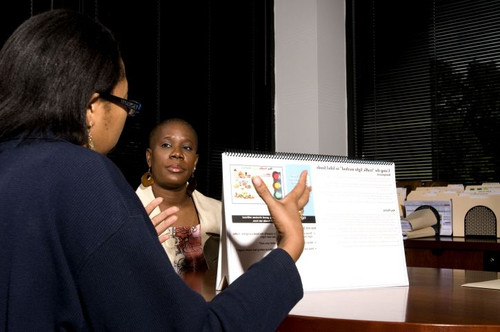
The Art of Deliberation

Algorithmic Allegories (version 1.0)
Marcus Comiter, Ben Sobel, and Jonathan Zittrain

The Case of Cross-Deputization
Joseph William Singer, Jeremy McClane, and Nicholas Price
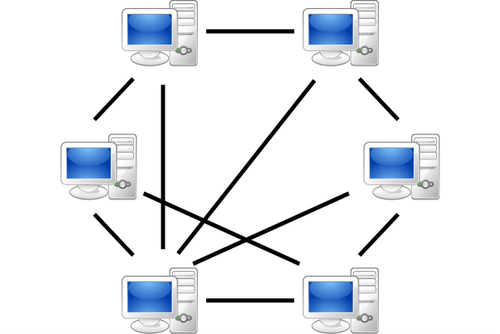
Sue the Consumer: Digital Copyright in the New Millennium
Charles Nesson and Sarah Jeong

MOOCs and Consequences for the Future of Education
Jeffrey R. Young and Charles Nesson

In the Stadium and in the Street: The Brazil Soccer Riots

Cost-Benefit Analysis at the Consumer Financial Protection Bureau
Howell Jackson and Kelley O'Mara

Ching Pow: Far East Yardies!!
Charles Nesson and Saptarishi Bandopadhyay

Balloon Boy
Todd D. Rakoff, Alex Whiting, and Kyle Virgien

The Case of the Landlord's Dilemma
Todd Rakoff and Joseph William Singer

From Sony to SOPA: The Technology-Content Divide
John Palfrey, Jonathan Zittrain, Kendra Albert, and Lisa Brem

Game Changers: Mobile Gaming Apps and Data Privacy
Susan Crawford, Jonathan Zittrain and Lisa Brem

The Smart Grid
Sonia McNeil, with Paul Kominers, J. Palfrey and J. Zittrain

The WikiLeaks Incident: Background, Details, and Resources
Alan Ezekiel, under supervision of John Palfrey and Jonathan Zittrain

Drafting an IP Strategy at MNC (C): New Puzzles
John Palfrey and Lisa Brem

Drafting an IP Strategy at MNC (B): Getting Started

Drafting an IP Strategy at MNC (A)

How to Approach a Case Study in a Problem Solving Workshop

The Case of the Federal Defender's Advice
David Abrams

The Case of the Anti-Bacterial Toys
Wendy Jacobs and David Abrams

The Case of the Encumbered Employee

The Case of the Section 8 Housing Vouchers
Todd D. Rakoff, Paul Radvany, and Rebecca Goldberg

The Case of the Medical Stent

The Case of the Commissioner's Choice
Wendy Jacobs and Shaun Goho

Creating Collaborative Documents

How to Be a Good Team Member

Problem Solving for Lawyers

The Case of the Rent-Paying Tenant
David Grossman, Todd Rakoff, Joseph William Singer, with Chris Bates

The Case of the Lead Toys

Writing and Presenting Short Memoranda to Supervisors

Innovative Assessment of Collaboration pp 113–134 Cite as
Assessing and Teaching 21st Century Skills: Collaborative Problem Solving as a Case Study
- Patrick Griffin 6
- First Online: 05 April 2017
2517 Accesses
9 Citations
Part of the book series: Methodology of Educational Measurement and Assessment ((MEMA))
This chapter describes the assessment of collaborative problem solving using human-to-human interaction. Tasks were designed to require partners to contribute resources or skills that they uniquely controlled. Issues were task design, data capture, item and data definition, calibration, and the link to teaching intervention. The interpretation of the student performance is mapped to a criterion-referenced interpretation framework, and reports are designed to assist teachers to intervene at a Vygotsky zone of proximal development in order to promote development of the student ability in collaborative problem solving. The data analytics demonstrate how the equivalent of test items are developed and issues such a local independence are discussed.
An earlier version of this chapter was presented as a keynote lecture at the Institute of Curriculum & Instruction at East China Normal University, November 6–8, 2015, Shanghai, China.
This is a preview of subscription content, log in via an institution .
Buying options
- Available as PDF
- Read on any device
- Instant download
- Own it forever
- Available as EPUB and PDF
- Compact, lightweight edition
- Dispatched in 3 to 5 business days
- Free shipping worldwide - see info
- Durable hardcover edition
Tax calculation will be finalised at checkout
Purchases are for personal use only
Adams, R. J., Vista, A., Awwal, N., Scoular, C., & Griffin, P. (2014). Automatic coding procedures for collaborative problem solving. In P. Griffin & E. Care (Eds.), Assessment and teaching of 21st century skills: Methods and approach (pp. 115–132). Dordrecht, Netherlands: Springer.
Google Scholar
Adams, R. J., Wu, M., & Wilson, M. (2006). ACER conquest . ACER: Melbourne.
Badia, X., Prieto, L., & Linacre, J. M. (2002). Differential item and test functioning (DIF & DTF). Rasch Measurement Transactions, 16 (3), 889.
Baghaei, P. (2007). Local dependency and Rasch measures. Rasch Measurement Transactions, 21 (3), 1105–1106.
Bentley, T., & Cazaly, C. (2015). The shared work of learning: Lifting educational achievement through collaboration . Mitchell Institute Research Report No. 03/2015. Melbourne, Australia: Mitchell Institute.
Binkley, M., Erstad, O., Herman, J., Raizen, S., Ripley, M., Miller-Ricci, M., et al. (2012). Defining twenty-first century skills. In P. Griffin, B. McGaw, & E. Care (Eds.), Assessment and teaching of 21st century skills (pp. 17–66). Dordrecht, Netherlands: Springer.
Care, E., Griffin, P., Scoular, C., Awwal, N., & Zoanetti, N. (2014). Collaborative problem solving tasks. In P. Griffin & E. Care (Eds.), Assessment and teaching of 21st century skills: Methods and approach (pp. 85–104). Dordrecht, Netherlands: Springer.
Dillenbourg, P., & Traum, D. (2006). Sharing solutions: Persistence and grounding in multimodal collaborative problem solving. Journal of the Learning Sciences, 15 (1), 121–151.
Article Google Scholar
Doran, H., Bates, D., Bliese, P., & Dowling, M. (2007). Estimating the multilevel Rasch model with the lme4 package. Journal of Statistical Software, 20 (2), 1–18.
Fischer, A., Greiff, S., & Funke, F. (2012). The process of solving complex problems. The Journal of Problem Solving, 4 (1), 19–42.
Glaser, R. (1983). Education and thinking: The role of knowledge . Technical Report No. PDS-6. Pittsburg, PA: University of Pittsburgh.
Griffin, P. (2014). Performance assessment of higher order thinking. Journal of Applied Measurement, 15 (1), 53–68.
Griffin, P., & Care, E. (2014). Assessment and teaching of 21st century skills: Methods and approach . Dordrecht, Netherlands: Springer.
Griffin, P., Care, E., & McGaw, B. (2012). The changing role of education and schools. In P. Griffin, B. McGaw, & E. Care (Eds.), Assessment and teaching of 21st century skills (pp. 1–15). Dordrecht, Netherlands: Springer.
Griffin, P., & Robertson, P. (2014). Writing assessment rubrics. In P. Griffin (Ed.), Assessment for teaching (pp. 125–155). Melbourne, Australia: Cambridge Press.
Hesse, F., Care, E., Buder, J., Sassenberg, K., & Griffin, P. (2014). A framework for teachable collaborative problem solving skills. In P. Griffin & E. Care (Eds.), Assessment and teaching of 21st century skills: Methods and approach (pp. 37–56). Dordrecht, Netherlands: Springer.
Kenworthy, L., & Kielstra, P. (2015). Driving the skills agenda: Preparing students for the future . Economist Intelligence Unit Report. Retrieved May 27, 2016, from http://www.economistinsights.com/analysis/driving-skills-agenda
Kong, S. C. (2011). An evaluation study of the use of a cognitive tool in a one-to-one classroom for promoting classroom-based dialogic interaction. Computers & Education, 57 (3), 1851–1864.
Linacre, J. M., & Wright, B. D. (1989). Mantel-Haenszel DIF and PROX are equivalent! Rasch Measurement Transactions, 3 (2), 51–53.
O’Neil, H. F., Chuang, S., & Chung, G. K. W. K. (2003). Issues in the computer-based assessment of collaborative problem solving. Assessment in Education: Principles, Policy & Practice, 10, 361–373.
Organisation for Economic Co-operation and Development. (2013). PISA 2015: Draft collaborative problem solving framework . Paris, France: OECD. Retrieved May 27, 2016, from https://www.oecd.org/pisa/pisaproducts/Draft%20PISA%202015%20Collaborative%20Problem%20Solving%20Framework%20.pdf
Polya, G. (1973). How to solve it: A new aspect of mathematical method . Princeton, NJ: Princeton University Press.
Rasch, G. (1960/1980). Probabilistic models for some intelligence and attainment tests. Chicago, IL: University of Chicago Press. Reprinted with Foreword and Afterword from Information and control by B. D. Wright, 1960. Copenhagen, Denmark: Danmarks Paedogogiske Institut.
Rummel, N., & Spada, H. (2005). Learning to collaborate: An instructional approach to promoting collaborative problem solving in computer-mediated settings. The Journal of the Learning Sciences, 14 (2), 201–241.
Verhelst, N. D., & Verstralen, H. H. F. M. (1997). Modeling sums of binary responses by the partial credit model . Cito Measurement and Research Department Report No. 97-7. Arneim, Netherlands: Cito.
Vygotsky, L. (1978). Mind and society: The development of higher psychological processes . Cambridge, MA: Harvard University Press.
Wilson, M. (2009). Measuring progressions: Assessment structures underlying a learning progression. Journal of Research in Science Teaching, 46 (6), 716–730.
Woods, K., Mountain, R., & Griffin, P. (2014). Linking developmental progressions to teaching. In P. Griffin & E. Care (Eds.), Assessment and teaching of 21st century skills: Methods and approach (pp. 267–292). Dordrecht, Netherlands: Springer.
Wright, B. D., & Stone, M. H. (1979). Best test design . Chicago, IL: MESA.
Wu, M., & Adams, R. (2005). Applying the Rasch model to psychosocial measurement: A practical approach . Melbourne, Australia: Educational Measurement Solutions.
Zoanetti, N., & Griffin, P. (2014). Log-file data as indicators for problem-solving processes. In J. Funke & B. Csapo (Eds.), The nature of problem solving . Paris, France: OECD.
Download references
Author information
Authors and affiliations.
Melbourne Graduate School of Education, Parkville, Australia
Patrick Griffin
You can also search for this author in PubMed Google Scholar
Corresponding author
Correspondence to Patrick Griffin .
Editor information
Editors and affiliations.
ACT , Iowa City, Iowa, USA
Alina A. von Davier
Research and Development Division, Educational Testing Service, Princeton, New Jersey, USA
Mengxiao Zhu
Patrick C. Kyllonen
Rights and permissions
Reprints and permissions
Copyright information
© 2017 Springer International Publishing Switzerland
About this chapter
Cite this chapter.
Griffin, P. (2017). Assessing and Teaching 21st Century Skills: Collaborative Problem Solving as a Case Study. In: von Davier, A., Zhu, M., Kyllonen, P. (eds) Innovative Assessment of Collaboration. Methodology of Educational Measurement and Assessment. Springer, Cham. https://doi.org/10.1007/978-3-319-33261-1_8
Download citation
DOI : https://doi.org/10.1007/978-3-319-33261-1_8
Published : 05 April 2017
Publisher Name : Springer, Cham
Print ISBN : 978-3-319-33259-8
Online ISBN : 978-3-319-33261-1
eBook Packages : Education Education (R0)
Share this chapter
Anyone you share the following link with will be able to read this content:
Sorry, a shareable link is not currently available for this article.
Provided by the Springer Nature SharedIt content-sharing initiative
- Publish with us
Policies and ethics
- Find a journal
- Track your research
Solving Case Studies: 8 Step-by-Step Strategies for Management Students
- by Tanu Bhatnagar
- Published: Oct 08, 2023, 09:45 IST
- Updated: Oct 08, 2023, 00:54 IST
- Tanu Bhatnagar
- October 8, 2023
Mastering the Art of Analyzing and Resolving Business Case Studies
Case study analysis is useful for management students. It’s more than a course—it’s a preview of your future job problems. These real-life examples allow you to apply class ideas and acquire a business-ready problem-solving attitude.
It’s not easy to master case study solving. Strategic thinking, critical thinking, and innovation are needed. This book covers the finest case study solution tactics to help you succeed academically and become a good manager. Solving a management case study is a crucial skill for students pursuing degrees in fields such as MBA, HRM, Finance, and Marketing.
Also, read 10 Proven Memorize Techniques for Students- Friendly Tips
8 Step-by-Step Strategies for Management Students
These case studies offer a practical application of management concepts, requiring students to analyze complex scenarios and devise solutions. In this comprehensive guide, we will outline a step-by-step approach to solving management case studies and provide a real-world example with a solution.
Step 1: Comprehensive Case Study Analysis
Comprehensive case study analysis is the cornerstone of effective problem-solving. It involves immersing yourself in the case study, not just skimming through it. Start by reading the case thoroughly, absorbing its context, characters, and central problem or objective. It’s crucial to understand the nuances of the situation presented, as even subtle details may significantly impact the solution.
During this phase, consider the following:
- Context : Understand the setting, time frame, and circumstances that led to the current situation.
- Characters : Familiarize yourself with the key individuals involved, their roles, motivations, and potential biases.
- Problem/Objective : Identify the core challenge or goal that the case revolves around.
Step 2: Familiarize with the Industry and Company
Familiarizing yourself with the industry and the specific company involved in the case study is pivotal. This step provides essential context and aids in making informed decisions and recommendations. Here’s how to approach it:
- Industry Analysis : Research the industry’s characteristics, trends, and dynamics. This knowledge helps you understand the broader competitive landscape and market forces at play.
- Company Background : Delve into the company’s history, products or services, market position, financial performance, and strategic priorities. This information helps you align your recommendations with the company’s goals and capabilities.
Step 3: Define the Core Problem/Objective

In this step, your objective is to pinpoint the primary issue or objective that the case study revolves around. By clarifying the problem that needs resolution or the goal that must be achieved, you set the stage for your analysis and decision-making. Consider the following:
- Problem Statement : Summarize the problem in a concise, clear statement. Ensure that your understanding aligns with the essence of the case.
- Objective Clarity : If the case involves an objective, such as expanding market share or improving profitability, define it with precision.
Step 4: Extract Relevant Information
A key aspect of case study analysis is extracting relevant facts and details from the case materials. This process involves revisiting the case study, both to reinforce your understanding and to gather pertinent information. Here’s how to approach it:
- Detailed Examination : Scrutinize the case for data, statistics, anecdotes, and any other information that sheds light on the problem or objective.
- Note-taking : Create a system for recording critical information, whether through written notes or mental models. This will aid in organizing your analysis.
Step 5: Identify Key Statements

Within the case study, there are often statements or pieces of information that hold particular significance. These statements can serve as guideposts during your analysis, helping you define and address the problem more precisely. Consider:
- Problem Clues : Look for statements that hint at the underlying issues or challenges.
- Objective Relevance : Identify statements that directly relate to the stated objective.
Step 6: Assess the External Environment
To make informed recommendations, you must assess the external environment surrounding the case. This step involves considering various factors that can influence the solution, including:
- Market Conditions : Analyze the market’s size, growth rate, trends, and competitive landscape.
- Regulatory Environment : Evaluate the impact of regulations, laws, and government policies on the case.
- Resource Availability : Understand the availability of resources, such as capital, talent, and technology.
- Competitive Forces : Assess the competitive forces at play, including existing rivals, potential entrants, suppliers, and buyers.
Also, read Top 10 Hobbies That Boost Your IQ: A Guide for Students
Step 7: Address Real-Life Constraints
Recognize that real-life problem-solving often comes with limitations, including incomplete information and time constraints. You should be prepared to make decisions based on the available data and within reasonable time limits. Consider:
- Time Sensitivity : Acknowledge any time pressures that may affect the decision-making process.
- Resource Constraints : Understand the limits of available resources, such as budget, manpower, or technology.
Step 8: Fill Information Gaps with Realistic Assumptions
Information gaps are common in real-world scenarios. To bridge these gaps, make realistic assumptions that align with the context of the case study. Use your judgment and critical thinking to supplement missing details while staying grounded in the case’s reality.
By following these steps diligently, you can approach management case studies methodically and develop well-structured, informed solutions that address the core problem or objective effectively

Problem: XYZ Corporation, a well-established software development firm, is grappling with ongoing employee performance challenges. Several members of its software development team consistently fail to meet project deadlines and produce work below the company’s quality standards.
Problem Question 1: What is the core problem that XYZ Corporation is facing concerning employee performance?
The central issue that XYZ Corporation is confronting concerning employee performance is the persistent underperformance of several software developers within the organization. These individuals consistently fail to meet project deadlines and produce work that falls significantly below the company’s established quality standards. This recurring problem has become a significant impediment to the company’s software development projects.
Problem Question 2: How are the underperforming employees affecting the company’s software development projects and overall business operations?
The underperforming employees in XYZ Corporation are having a substantial negative impact on the company’s software development projects and overall business operations. Their consistent inability to meet project deadlines results in significant delays in project completion, disrupting project schedules and affecting the company’s ability to deliver products and services on time. Furthermore, the compromised quality of their work leads to subpar products, potentially resulting in client dissatisfaction and eroding the company’s reputation. These issues collectively undermine the company’s profitability as it grapples with missed opportunities and the costs associated with addressing substandard work. Addressing this challenge is imperative for XYZ Corporation to ensure its continued success and competitiveness in the software development industry.
. Student Approach to Solve:
- Begin by thoroughly reading the case study to grasp its context, characters, and the central problem or objective.
- Understanding the broader business environment will aid in making informed decisions and recommendations.
- Identify the primary issue or objective in the case.
- Create a mental or written model of the core problem or objective and make note of critical information that informs your understanding.
- Acknowledge that real-life problems often come with incomplete information and time constraints.
- Use your judgment to supplement missing details.
By following these steps and considering the provided answers, students can approach and solve the case study effectively, offering valuable insights and recommendations to address XYZ Corporation’s employee performance challenges.
Finally, the case study solution connects management theory with practice. It helps students analyse difficult circumstances, make educated judgements, and find effective solutions, which employers in numerous sectors value.
The above guide’s techniques can help students succeed in management school and prepare them for job difficulties and possibilities. Accept case studies as learning opportunities, improve your problem-solving abilities, and become a skilled and resourceful manager. The greatest method to learn is through doing, and case study solution leads to real-world success.
Also, read 10 Best Economic Books for Commerce Students

Meet Tanu Bhatnagar, an educational expert with extensive experience in teaching, research and mentoring.With a decade in... (Full bio)
Latest Exams
Best colleges.

Trending News

Best Books to Read in 2023
Best Books to Read in 2023 Are you a bookworm or a bibliophile, if yes, then this is the ...

10 Proven Memorize Techniques for Students- Friendly Tips
In the exhilarating journey of 10 Proven Memorize Techniques for Students learning, memory is your trusty companion. Whether ...

Top 20 Toughest exams in world Latest List 2023
Top 20 toughest exams in world is about exams in the world that required very hard work to ...
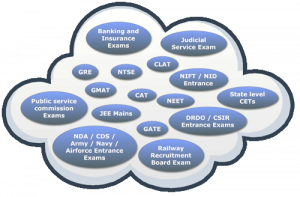
Top 20 toughest exams in India Latest List 2023
Top 20 toughest exams in India - Exams are the perhaps most toughest moments for any student. A ...

Top 20 Colleges of DU Latest List 2023
Top 20 Colleges of DU Getting admissions to the top 20 colleges of DU is a dream for every ...

Top 20 NITs of India Latest List 2023
Top 20 NITs of India - Amongst the 31 NITs in India, today, we are talking ...

Top 12 Artificial Intelligence Colleges in Mumbai
Here are the Top 12 Artificial Intelligence in Mumbai. Artificial intelligence (AI) refers to the simulation of human ...
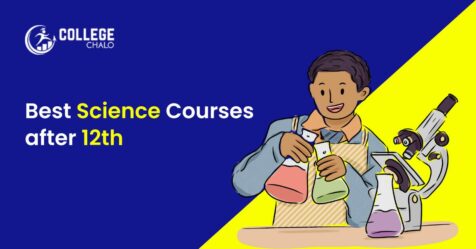
Best Science Courses after 12th
As you stand on the Best Science Courses after 12th academic journey, the realm of science beckons, offering ...
Curated Latest News For You

JEE Advanced 2023 provisional answer key, access links here

Best 5 Time Management Tips for Competitive Exams
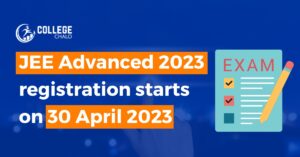
JEE Advanced 2023 registration starts on 30 April 2023

Score High in NEET 2023 With these Key Subject wise topics

Top 8 Jobs in Indian Army after Plus Two

10 Super Tips for Cracking NEET 2023
The sooner you start, the better .
Millions of students have entrusted CollegeChalo to facilitate their seamless and smooth admission process to their dream colleges and universities. With CollegeChalo, you can gain a competitive edge by easily accessing exam and course details to stay ahead of the admission journey. What are you waiting for?
ADMISSION ENQUIRY FORM
Enter basic details, signin with google, or use your email, signup with google, forgot your password, resetting new password, connecting you to your dream college.
Discover Leading Universities and Colleges, Explore Courses, and Navigate Exams
search results:
How CollegeChalo helps you in admission ?
- With a completely online admission process, we help you get college admission without having to step out.
- Upto 50% discount on application forms
- 24*7 counselling facilities available
- Ask and receive answers from experts and other users


- CRLT Consultation Services
- Consultation
- Midterm Student Feedback
- Classroom Observation
- Teaching Philosophy
- Upcoming Events and Seminars
- CRLT Calendar
- Orientations
- Teaching Academies
- Provost's Seminars
- Past Events
- For Faculty
- For Grad Students & Postdocs
- For Chairs, Deans & Directors
- Customized Workshops & Retreats
- Assessment, Curriculum, & Learning Analytics Services
- CRLT in Engineering
- CRLT Players
- Foundational Course Initiative
- CRLT Grants
- Other U-M Grants
- Provost's Teaching Innovation Prize
- U-M Teaching Awards
- Retired Grants
- Staff Directory
- Faculty Advisory Board
- Annual Report
- Equity-Focused Teaching
- Preparing to Teach
- Teaching Strategies
- Testing and Grading
- Teaching with Technology
- Teaching Philosophy & Statements
- Training GSIs
- Evaluation of Teaching
- Occasional Papers

Case-based Teaching and Problem-based Learning
Case-based teaching.
With case-based teaching, students develop skills in analytical thinking and reflective judgment by reading and discussing complex, real-life scenarios. The articles in this section explain how to use cases in teaching and provide case studies for the natural sciences, social sciences, and other disciplines.
Teaching with Case Studies (Stanford University)
This article from the Stanford Center for Teaching and Learning describes the rationale for using case studies, the process for choosing appropriate cases, and tips for how to implement them in college courses.
The Case Method (University of Illinois)
Tips for teachers on how to be successful using the Case Method in the college/university classroom. Includes information about the Case Method values, uses, and additional resource links.
National Center for Case Study Teaching in Science (National Science Teaching Association)
This site offers resources and examples specific to teaching in the sciences. This includes the “UB Case Study Collection,” an extensive list of ready-to-use cases in a variety of science disciplines. Each case features a PDF handout describing the case, as well as teaching notes.
The Michigan Sustainability Cases Initiative (CRLT Occasional Paper)
This paper describes the Michigan Sustainability Cases Initiative, including links to the full library of cases, and it offers advice both for writing cases and facilitating case discussions effectively.
The Case Method and the Interactive Classroom (Foran, 2001, NEA Higher Education Journal)
First-person account of how a sociology faculty member at University of California, Santa Barbara began using case studies in his teaching and how his methods have evolved over time as a professor.
Problem-based Learning
Problem-based learning (PBL) is both a teaching method and an approach to the curriculum. It consists of carefully designed problems that challenge students to use problem solving techniques, self-directed learning strategies, team participation skills, and disciplinary knowledge. The articles and links in this section describe the characteristics and objectives of PBL and the process for using PBL. There is also a list of printed and web resources.
Problem-Based Learning Network (Illinois Mathematics and Science Academy)
Site includes an interactive PBL Model, Professional Development links, and video vignettes to illustrate how to effectively use problem-based learning in the classroom. The goals of IMSA's PBLNetwork are to mentor educators in all disciplines, to explore problem-based learning strategies, and to connect PBL educators to one another.
Problem-Based Learning: An Introduction (Rhem, 1998, National Teaching and Learning Forum)
This piece summarizes the benefits of using problem-based learning, its historical origins, and the faculty/student roles in PBL. Overall, this is an easy to read introduction to problem-based learning.
Problem-Based Learning (Stanford University, 2001)
This issue of Speaking of Teaching identifies the central features of PBL, provides some guidelines for planning a PBL course, and discusses the impact of PBL on student learning and motivation.
Problem-Based Learning Clearinghouse (University of Delaware)
Collection of peer reviewed problems and articles to assist educators in using problem-based learning. Teaching notes and supplemental materials accompany each problem, providing insights and strategies that are innovative and classroom-tested. Free registration is required to view and download the Clearinghouse’s resources.
See also: The International Journal of Problem-Based Learning

Contact CRLT
location_on University of Michigan 1071 Palmer Commons 100 Washtenaw Ave. Ann Arbor, MI 48109-2218
phone Phone: (734) 764-0505
description Fax: (734) 647-3600
email Email: [email protected]
Connect with CRLT

directions Directions to CRLT
group Staff Directory
markunread_mailbox Subscribe to our Blog
An official website of the United States government
The .gov means it’s official. Federal government websites often end in .gov or .mil. Before sharing sensitive information, make sure you’re on a federal government site.
The site is secure. The https:// ensures that you are connecting to the official website and that any information you provide is encrypted and transmitted securely.
- Publications
- Account settings
Preview improvements coming to the PMC website in October 2024. Learn More or Try it out now .
- Advanced Search
- Journal List
- J Microbiol Biol Educ
- v.19(3); 2018
A Systematic Approach to Teaching Case Studies and Solving Novel Problems †
Carolyn a. meyer.
1 Department of Biomedical Sciences, Colorado State University, Fort Collins, CO 80523
Heather Hall
Natascha heise, karen kaminski.
2 School of Education, Colorado State University, Fort Collins, CO 80523
Kenneth R. Ivie
Tod r. clapp, associated data.
Both research and practical experience in education support the use of case studies in the classroom to engage students and develop critical thinking skills. In particular, working through case studies in scientific disciplines encourages students to incorporate knowledge from a variety of backgrounds and apply a breadth of information. While it is recognized that critical thinking is important for student success in professional school and future careers, a specific strategy to tackle a novel problem is lacking in student training. We have developed a four-step systematic approach to solving case studies that improves student confidence and provides them with a definitive road map that is useful when solving any novel problem, both in and out of the classroom. This approach encourages students to define unfamiliar terms, create a timeline, describe the systems involved, and identify any unique features. This method allows students to solve complex problems by organizing and applying information in a logical progression. We have incorporated case studies in anatomy and neuroanatomy courses and are confident that this systematic approach will translate well to courses in various scientific disciplines.
INTRODUCTION
There is increasing emphasis in pedagogical research on encouraging critical thinking in the classroom. The specific mental processes and behaviors involved require the individual to engage in reflective and purposeful thinking. Critical thinking encompasses the ability to examine ideas, make decisions, and solve problems ( 1 , 2 ). The skills necessary to think critically are essential for learners to evaluate multiple perspectives and solve novel problems in the classroom and throughout life. Career success in the 21st century requires a complex set of workforce skills. Current labor market assessments indicate that by the year 2020, the majority of occupations will require workers to display cognitive skills such as active listening, critical thinking, and decision making ( 3 , 4 ). In particular, current studies show that the US economy is impacted by a deficit of skilled workers able to solve problems and transfer learning to any unique situation ( 3 ).
The critical thinking skills necessary to tackle novel problems can best be addressed in higher education institutions ( 5 , 6 ). Throughout education, and specifically in college courses, students tend to be required to regurgitate knowledge through a myriad of multiple-choice exams. Breaking this habit and incorporating critical thinking can be difficult for students. While the ability to recite information is helpful for establishing base knowledge, it does not prepare students to tackle novel problems. Ideally, the objective of any course is to encourage students to move beyond recognition of knowledge into its application ( 7 ). Considering this, the importance of critical thinking is widely accepted; however, there has been some debate in educational research regarding how to teach these skills ( 8 ). Research has demonstrated that students show significant improvements in critical thinking as a result of explicit methods of instruction in related skills ( 9 , 10 ). Explicit instruction provides a protocol on how to approach a problem. By establishing the necessary framework to work through unfamiliar details, we enable students to independently solve complex problems.
These skills, which are important in every facet of the workforce, are vital for students in the sciences ( 10 , 11 ). Here, we discuss a specific process that teaches students a systematic approach to solving case studies in the anatomical sciences. Case studies are a popular method to encourage critical thinking and engage students in the learning process ( 12 ). While the examples described here are specifically designed to be implemented in anatomy and neuroanatomy courses, this platform lends itself to teaching critical thinking skills across scientific disciplines. This four-step approach encourages students to work through four separate facets of a problem:
- Define unfamiliar terms
- Create a timeline associated with the problem
- Describe the (anatomical) systems involved
- Identify any unique features associated with the case
Often, students start by trying to plug in memorized facts to answer a complicated question quickly. With the four-step approach, students learn that before “solving” the case study, they must analyze the information presented in the case. The case studies implemented are anatomically-based case studies that emphasize important structural relationships. The case may include terminology with which the students are not familiar. They therefore begin by identifying and defining unfamiliar terms. They then specify the timeline in which the problem occurred. Establishing a timeline and narrowing the focus can be critical when considering the relevant pathology. Students must then describe the anatomical systems involved (e.g., musculoskeletal or circulatory), and finally list any additional unique features of the case (e.g., lateral leg was struck or patient could not abduct the right eye). By dissecting the details along the lines of these four categories, students create a clear roadmap to approach the problem. Case studies with a clinical focus are complex and can be overwhelming for unpracticed students. However, teaching students to follow this systematic approach gives them the tools to begin to carefully dismantle even the most convoluted problem.
Intended audience
This approach to solving case studies has been applied in undergraduate courses, specifically in the sciences. This curriculum is currently utilized in both human gross anatomy and functional neuroanatomy capstone courses. While it is ideal to implement this process in a course that runs in parallel with a lecture-heavy course, it can also be utilized with case studies in a typical lecture class.
Anatomy-based case studies lend themselves well to this problem-solving approach due to the complexities of clinical problems. However, we believe with an appropriately designed case study, this model of teaching critical thinking can easily be expanded to any discipline. This activity encourages critical thinking and engages students in the learning process, which we believe will better prepare them for professional school and careers in the sciences.
Prerequisite student knowledge
Required previous student knowledge only extends to that which students learn through the related course taken previously or concurrently. Application of this approach in different classroom settings only requires that students have a basic understanding of the material needed to solve the case study. As such, the case study problem and questions should be built around current topics being studied in the classroom.
Using unfamiliar words teaches students to identify important information. This encourages integration of information and terminology, which can be critical for understanding anatomy. Simple terms, like superficial or deep, guide discussions about anatomical relationships. While students may be able to recite the definitions of these concepts, applying that information to a case study requires integrating the basic definition with an understanding of the relevant anatomy. Specific prerequisite knowledge for the sample case study is detailed in Appendix 1 .
Learning time
This process needs to be learned and practiced over the course of a semester to ensure long-term retention. With structured and guided attempts, students will be able to implement this approach to solving case studies in one 50-minute class period ( Table 1 ). The course described in this study is a capstone course that meets once weekly. Each 50-minute class period centers around working through a case study. As some class sessions are reserved for other activities, students complete approximately 10 case studies during the semester. Students begin to show increased confidence with this method within a few weeks and ultimately are able to integrate this approach into their critical thinking skillset by the end of the semester. Presentation of the case study, individual or small group work, and class discussion are all achieved in one standard class session ( Table 1 ). The current model does not require student work prior to the class meeting. However, because this course is taken concurrently with a related, content-heavy lecture component, students are expected to be up to date on relevant material. Presenting the case study in class to their peers encourages students to work through the systematic approach we describe here. Each case study is designed to correlate with current topics from the lecture-based course. Following the class period, students are expected to complete a written summary of the discussed case study. The written summary should include a detailed explanation of the approach they utilized to solve the problem, as well as a definitive solution. Written summaries are to be completed two days after the original class period.
Anticipated in-class time to implement this model.
Learning objectives
This model for teaching a systematic approach to solving case studies provides a framework to teach students how to think critically and how to become engaged learners when given a novel problem. By mastering this technique, students will be able to:
- Recognize words and concepts that need to be defined before solving a novel problem
- Recall, interpret, and apply previous knowledge as it relates to larger anatomical concepts
- Construct questions that guide them through which systems are affected, the timeline of the pathologies, and what is unique about the case
- Formulate and justify a hypothesis both verbally and in writing
As a faculty member, it can be challenging to create appropriate case studies when developing this model for use in a specific classroom. There are resources that provide case studies and examples that can be tailored to specific classroom needs. The National Center for Case Study Teaching in Science (University at Buffalo) can be a useful tool. The ultimate goal of this model is to teach an approach to problem solving, and a properly designed case study is crucial to success. To build an effective case study, faculty must include sufficient information to provide students with enough base knowledge to begin to tackle the problem. This model is ideal in a course that pairs with a lecture-heavy component, utilized in either a supplementary course or during a recitation. The case study should be complex and not quickly solved. An example of a simplified case study utilized in Human Gross Anatomy is detailed in Appendix 1 .
This particular case study encourages students to think through the anatomy of the lateral knee, relevant structures in this area, and which muscle compartments may be affected based on movement disabilities within the case. While more complex case studies can certainly be developed for the Neuroanatomy course through Clinical Case Studies, this case study provides a good example of a problem to which students cannot immediately provide the answer. They must think critically through the four-step process to identify the “diagnosis” for this patient.
This approach to solving case studies can be integrated into the classroom with no special materials. However, we use a Power-Point presentation and personal whiteboards (2.5’ × 2’) to both improve delivery of the case study and facilitate small group discussion, respectively. The Power-Point presentation is utilized by faculty to assist in leading the classroom discussion, prompting student responses and projecting relevant images. As the faculty member is presenting the case study during the first five minutes of class ( Table 1 ), the wording of the case study can be displayed on the PowerPoint slide as a reference while students take notes.
Faculty instructions
It is helpful to first present an overview of the approach and to solve a case study together as a class. We recommend giving students a lecture describing the benefits of a systematic approach to case studies and emphasizing the four-step approach outlined in this paper. Following this lecture, it is imperative that faculty walk the students through the first case study. This helps to familiarize students with the approach and lays out expectations on how to break down the individual components of the case. During the initial case study, faculty must heavily moderate the discussion, leading students through each step of the approach using the provided Case Study Handout ( Appendix 2 ). In subsequent weeks, students can be expected to show increasing independence.
Following initial presentation of the case study in class, students begin work that is largely independent or done in small groups. This discussion has no grades assigned. However, following the in-class discussion and small group work, students are asked to detail their approach to solving the case study and their efforts are graded according to a set rubric ( Appendix 3 ). This written report should document each step of their thought process and detail the questions they asked to reach the final answer, providing students with a chance for continual self-evaluation on their mastery of the method.
Implementing this model in the classroom should focus not only on the individual student approach, but also on creating an encouraging classroom environment and promoting student participation. Student questions may prompt other student questions, leading to an engaging discussion-based presentation of the case study, which is crucial to increasing confidence among students, as has been seen with the data represented in this paper. When moderating the discussion, it is important that faculty emphasize to students that the most critical goal of the exercise is to learn how to ask the next most appropriate question. The questions should begin with broad concepts and evolve to discussing specific details. Efforts to quickly arrive at the answer should be discouraged.
Students should be randomly assigned to groups of two to three individuals as faculty members moderate small group discussion during class. Randomly assigning students to different groups each week encourages interaction between all students in the class and promotes a collaborative environment. Within their small groups, students should work through the systematic four-step process for solving a novel problem. Students are not assigned specific roles within the group. However, all group members are expected to contribute equally. During this process, it can be beneficial to provide students with a template to follow ( Appendix 2 ). This template guides their discussion and encourages them to use the four-step process. Additionally, each small group is given a white board that they can use to facilitate their small group discussions. Specifically, asking students to write down details of each of the four facets of the problem (definitions, timeline, systems involved, unique features) and how they arrived at these encourages them to commit to their answers. This also ensures they have concrete evidence to support their “diagnosis” and that they have confidence in presenting it to the class. Two or three small groups are chosen randomly each week to present their hypothesis to the class using their whiteboard.
Suggestions for determining student learning
The cadence of the in-class discussion can provide an informal gauge of how students are progressing with their ability to apply the systematic approach. The discussion for the initial case studies should be largely faculty led. Then, as the semester progresses, faculty should step back into a facilitator role, allowing the dialogue to be carried by the students.
Additionally, requiring students to write a detailed summary of their approach to the problem provides a strong measure of student learning. While it is important for students to document their final “diagnosis” or solution to the problem, the focus of this assignment is primarily on the process and the series of relevant questions the student used to arrive at the answer. These assignments are graded according to a set rubric ( Appendix 3 ).
Sample data
The following excerpt is from a student who showed marked improvement over the course of the semester in implementing this approach to solving case studies. The initial submission for the case study write-up was rudimentary, did not document the thought process through appropriate questions, and lacked an in-depth explanation to demonstrate any critical thinking. By the end of the semester, this student documented a logical thought progression through this four-step approach to solving the case study. This student, additionally, detailed the questions that led each stage of critical thinking until a “diagnosis” was reached (complete sample data are available in Appendix 4 ).
Initial sample
“Given loss of sensory and motor input to left lower limb, right anterior cerebral artery ischemia caused the sensory and motor cortices of the contralateral (left) lower limb to be without blood flow for a short amount of time (last night). The lack of flow led to a fast onset of motor and sensory paresis to limb.”
Final sample
“…the left vestibular nuclei which explains the nystagmus, and the left cerebellar peduncles which carry information that aids in coordinating intention movements. My next question was where in the brainstem are all of these components located together? I narrowed this to the left caudal pons. Finally, I asked which artery supplies the area that was damaged by the lesion? This would be the left anterior inferior cerebellar artery.”
Safety issues
There are no known safety issues associated with implementing this approach to solving case studies.
The primary goal of the model discussed here is to give students a method that uses critical reasoning and helps them incorporate facts into a complete story to solve case studies. We believe that this model addresses the need for teaching the specific skill set necessary to develop critical thinking and engage students in the learning process. By encouraging critical thinking, we begin to redirect the tendency to simply recite a memorized answer. This four-step approach to solving case studies is ideal for the college classroom, as it is easily implemented, requires minimal resources, and is simple enough that students demonstrate mastery within one semester. While it was designed to be used in anatomy and neuroanatomy courses, this platform can be used across scientific disciplines. Outside of the classroom, in professional school and future careers, this approach can help students to break down the details, ask appropriate questions, and ultimately solve any complex, novel problem.
Field testing
This model has been implemented in several courses in both undergraduate and graduate settings. The data and approach detailed here are specific to an undergraduate senior capstone course with approximately 25 students. The lecture-based course, which is required to be taken concurrently or as a prerequisite, provides a strong base of information from which faculty can develop complex case studies.
Evidence of student learning
Student performance on written case study summaries improved over approximately ten weeks of practicing the systematic four-step approach ( Fig. 1 ). As indicated by the data, scores improve and begin to plateau around five weeks, indicating a mastery of the approach. In the spring 2016 semester, a marked drop in scores was observed at week 8. We believe that this reflects a particularly difficult case study that was assigned that week. After observing the overall trend in scores, instructional format was adjusted to provide students with more guidance as they worked through this particular case study.

Grade performance in case study written summaries as measured with the grading rubric throughout the semester. A) Mean (with SD) grade performance in case study write-ups in the spring semester of 2016. B) Mean (with SD) grade performance in case study write-ups in the spring semester of 2017. Overall grade performance in case study written summaries improved throughout the 10 weeks in which this method was implemented in the classroom. Written summaries are graded based on a set rubric ( Appendix 3 ) that assigned a score between 0 and 1 for five different categories. Data represent the mean of students’ scores and the associated standard deviation. Improved student performance throughout the semester indicates progress in successful incorporation of this method to solve a complex novel problem.
After the class session, students were asked to provide a written summary of their findings. A set rubric ( Appendix 3 ) was used to assess students on their ability to apply basic anatomical knowledge as it relates to the timeline, systems involved, and what is unique in each case study. Students were also asked to describe the questions that they had asked in order to reach a diagnosis for the case study. The questions formulated by students indicate their ability to bring together previous knowledge to larger anatomical concepts. In this written summary, students were also required to justify the answer they arrived at in each step of the process. In addition to these four steps, students were assessed on the organization of their paper and whether their diagnosis is well supported.
Although class participation was not formally assessed, the improvements demonstrated in the written assignments were mirrored in student discussions in the classroom. While it is difficult to accurately assess how well students think critically, students demonstrated success in learning this module, which provides the necessary framework for approaching and solving a novel problem.
Student perceptions
Students were asked to answer the open response question, “Describe the process you use to figure out a novel problem or case study.” Responses were anonymized, then coded based on frequency of responses. Responses were collected at the start of the semester, prior to any instruction in the described systematic approach, and again at the end of the semester ( Figs. 2 and and3). 3 ). Overall, student comments indicated that mastering this four-step approach greatly increased their confidence in tackling a novel problem. Below are some sample student responses.

Student responses to a survey regarding their approach to solving a novel problem. Data were collected prior to and following the completion of the spring semester of 2016. A) Student approach to solving a novel problem at the beginning of the semester. B) Student approach to solving a novel problem at the end of the semester. Student responses indicate that following a semester of training in using this method, students prefer to use this four-step systematic approach to solve a novel problem.

Student responses to a survey regarding their approach to solving a novel problem. Data were collected prior to and following the completion of spring semester of 2017. A) Student approach to solving a novel problem at the beginning of the semester. B) Student approach to solving a novel problem at the end of the semester. Student responses indicate that students overwhelmingly utilize this systematic approach when solving a novel problem.
“Rather than being intimidated with a set of symptoms I can’t explain, I’m now able to break them down into simpler questions that will lead me down a path of understanding and accurate explanation.” “I now know how to address an exam question or life problem by considering what is needed to solve it. This knowledge will help me to address each problem efficiently and calmly. As a future nurse, I will benefit from developing a logical and stereotypical approach to solving problems. I have learned to assess my thinking and questioning and modify my approach to problem-solving. While the problems may be different in the future, I am confident that I will be able to efficiently learn from my successes and setbacks and continually improve.” “I’m sure I’ll use this approach when I’m faced with any other novel problem, whether it’s scientific or not. Stepping back and establishing what I know and what I need to find out makes difficult problems a lot more approachable.” “Before, I would look at all the information presented and try to find things that I recognized. Then I would simply ask myself if I knew the answer. Even if I did actually know the answer, I had no formula to make the information understandable, cohesive, or approachable. I now feel far more confident when dealing with novel problems and do not become immediately overwhelmed.”
This approach encourages students to quickly sort through a large amount of information and think critically. Although students can find the novel nature of this method cumbersome in the initial implementation in the classroom, once they become familiar with the approach, it provides a valuable platform for attacking any novel problem in the future. The ability to apply this approach to critical thinking in any discipline was also demonstrated, as is evidenced by the two following student responses.
“When I first thought about this question and when solving case studies I tried to find the answer immediately. I’m good at memorizing information and spitting it back out but not working through an issue and having a method. I definitely have a more successful way to think through complex problems and being patient and coming up with an answer.” “I already use it in many of my other classes and life cases. When I take an exam that is asking a complicated question or is in a long format, I work to break it down like I did in this class and try to find the base question and what the answer may be. It has actually helped significantly.”
Possible modifications
Currently, students are randomly assigned to groups each week. In future semesters, we could improve small group work by utilizing software that helps to identify individual student strengths and assign groups accordingly. Additionally, while students are given flexibility within their small groups, if groups struggle with equality of workload we could assign specific roles and tasks.
We are also using this model in a large class (100 students) and assessing understanding of the case study through instant student response questions (ICLICKER). While this model does not allow for the valuable in-depth classroom discussions, it still presents the approach to students and allows them to begin to implement it in solving complex problems. Preliminary data from these large classes indicate that students initially find the method difficult and cumbersome. Further development and testing of this model in a large classroom will improve its use for future semesters.
SUPPLEMENTAL MATERIALS
Appendix 1: sample case study, appendix 2: case study handout, appendix 3: case study grading rubric, appendix 4: student writing sample, acknowledgments.
Use of anonymized student data and student responses to surveys was approved by the Institutional Review Board at Colorado State University. The authors declare that there are no conflicts of interest.
† Supplemental materials available at http://asmscience.org/jmbe
Structured Problem Solving and Case Studies
Learn how to solve a problem structurally through a data-driven approach. Master the art of problem-solving through different frameworks around multiple business cases.

Course is not enrollable

COURSE OVERVIEW
Master these skills

Skills covered
Data Manipulation
Net Present Value

Level & pre-requisites
Beginner Level
No coding experience required
Structured Problem Solving and Case Studies Preview Video

COURSE HIGHLIGHT
Benefit of mastering this course
Learn the art of structured problem solving through various frameworks and case studies
Learn most advanced problem-solving frameworks and techniques and their application in real world
Learn the real-world application of probability, distribution and hypothesis testing

THE ADVANTAGES
Why take SkilloVilla's courses
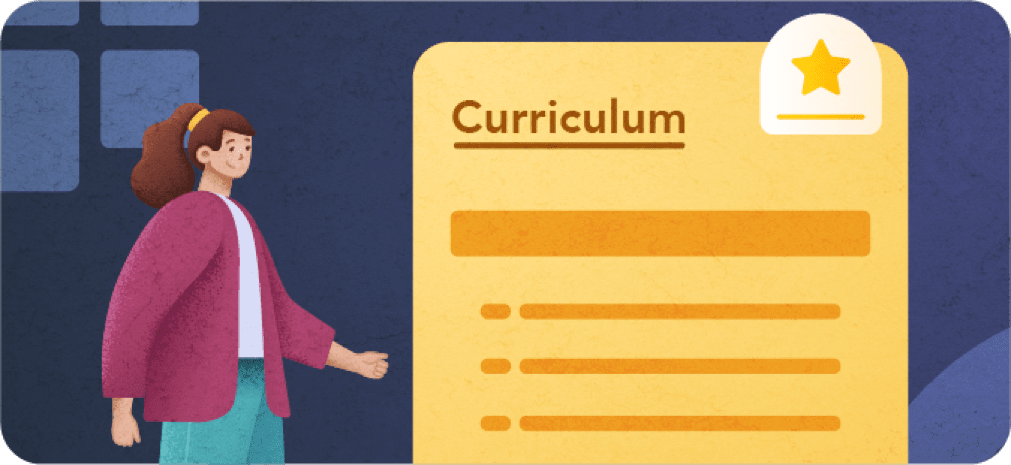
World class curriculum designed by experts
Learn skills that matter in the real world with a curriculum made for the needs of the industry

Learn with case studies from the industry
Solve real life case studies, learn by applying core concepts to real problems

Showcase your skills with industry recognized certificate
Share your certificate and tell the world about your skills. Get certified!

Courses designed by experts

SkilloVilla's world-class curriculum
Measure of Central Tendency
Measures of Variability
Probability
Probability Distribution
Hypothesis Testing
Inferential Statistics
Problem Solving and Business Cases
Interview cases market entry
Interview Cases: Pricing
Interview Cases: Growth strategy
Interview Cases: Unconventional Cases
Interview Cases: Profitability
General Frameworks
Innovation Frameworks
Guesstimates
Puzzles and Riddles
Capstone - Drone Delivery System
Speak to career counselors
Book a session, ask your doubts away
CERTIFICATION
Get certified to become a pro!
View certificate.
Certification recognized in 300+ companies
Prove that your skills are certified to employers
Be a recruiter-magnet in LinkedIn with your certifications
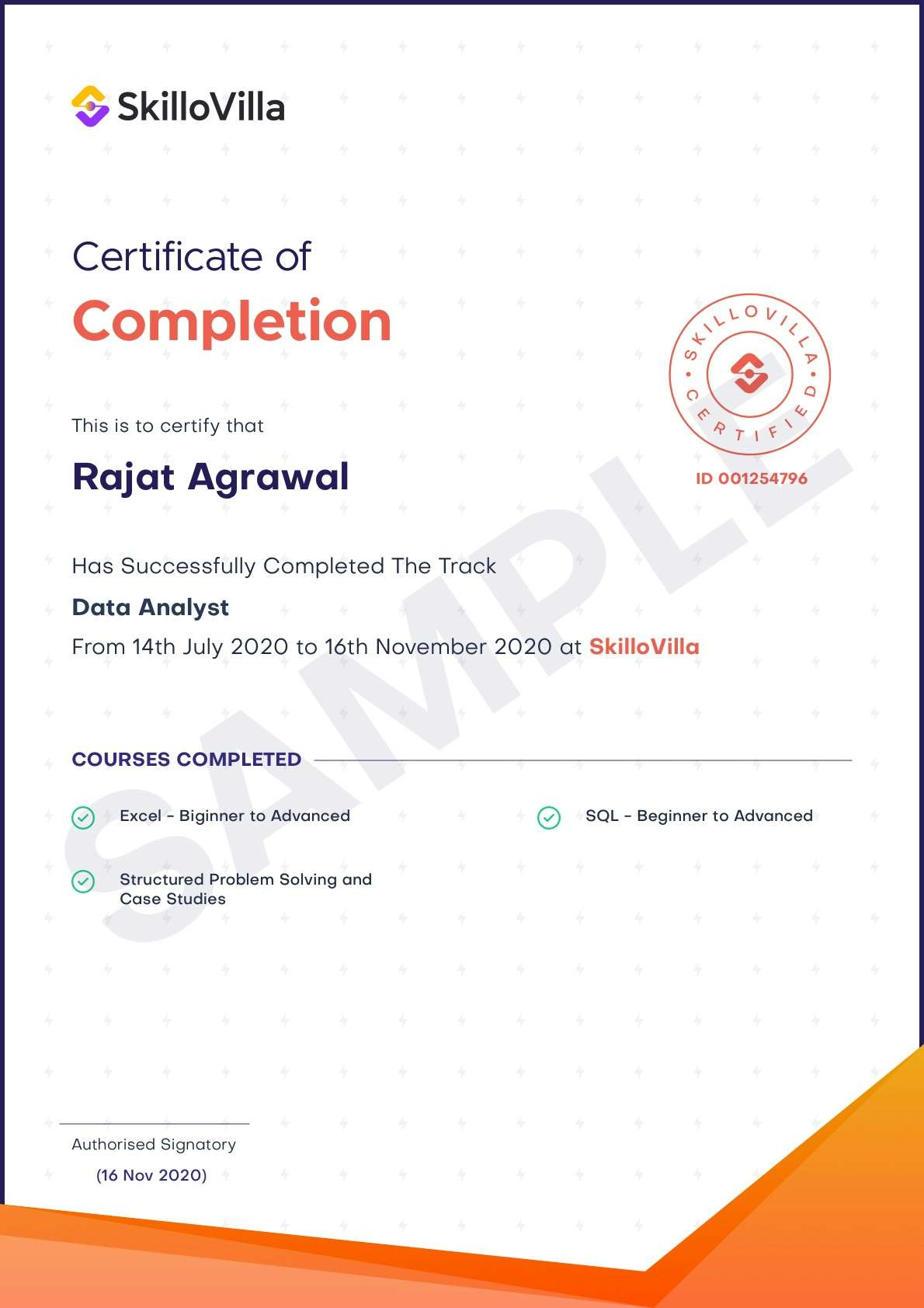
TESTIMONIALS

Raj Golhani
EXL Services
Excellent content and great mentorship! I had no clue how to get a job in data. SkilloVilla helped me not only learn from very scratch but also helped me understand practical applications through expert driven live classes. Thanks you SkilloVilla team and Deepak Sir for supporting me till I got placed.

Anshul Gupta
The curriculum is really best in class. I learnt all the necessary practical concepts and SkilloVilla team helped me get placed at Flipkart. It's a great place to learn directly from industry experts and sharpen your skills. Really recommend it!

Hardik Kaneriya
Eli Lilly and Company
SkilloVilla’s Data Science Track helped me switch career. Live classes and top notch courses really helped me. And the best part was the resume preparation and mock interviews drills which created a virtual interview environment and helped me prepare well for actual interviews
FREQUENTLY ASKED QUESTIONS
Read more to know more
What is the difference between tracks and courses, can you elaborate on the employment assistance that i will receive, what is the mode of teaching, will there be live classes, will i receive a certificate for completion of the course/track, will i get lifetime access to the content, do you guarantee a job at the end of the track, why should i choose skillovilla's data analytics career track over other online analytics courses / online data analytics certification program, why should i choose skillovilla's data science career track over any other online data science degree, why should i choose skillovilla's data analytics career track over other online data analytics certificate program, why should i choose skillovilla's data science career track over other online data science certification, still have questions, request a callback to get in touch with our academic counsellors..
Start your journey here
Kepner-Tregoe Technique Application to Problem Solving Case Study
Introduction, identification of the problem, analysis of the problem, significance of the problem for local and international organizations, application of the technique selected for the problem.
The success of many organizations depends on how well their managers address the challenges that affect them. Problem-solving is a skill that many managers acquire, based on their experiences on the job and, most importantly, their choice and adoption of problem-solving techniques (Hill, 2012). Depending on the type of problem affecting an organization and the resources available to solve them, managers have a selection of tools to address their corporate challenges. The Fishbone diagram, Duncker diagram, Kepner Tregoe diagram, and TRIZ are some problem-solving techniques available to managers. Researchers, observers, and commentators alike have often debated their efficacies and use in different management contexts.
In this paper, we focus on the Kepner Tregoe technique as an effective problem-solving tool for manufacturing companies. To do so, we use a case study of its application in Toyota Motor Corporation (Japan). This case study highlights how the managers of the automobile giant continue to rely on the Kepner Tregoe technique to solve some of the problems associated with the implementation of the just-in-time (JIT) technique in its manufacturing and assembly processes. We have divided this paper into six key sections that include an introduction, problem identification, problem analysis, an analysis of the significance of the problem for local and international organizations, and an overview of the application of the technique selected for the problem. In the last section of this paper, we evaluate the solutions to the problem and review the underlying justifications for developing them.
In the early 1970s, Toyota used the Kepner Tregoe technique to improve its manufacturing and vehicle assembly processes during the evolution of its manufacturing processes that hinged on the adoption of the JIT production process (Kaynak, 2013). The adoption of the JIT process was known as the “Toyota Production Process” and was intended to improve the corporation’s manufacturing efficiency (Kaynak, 2013). Outside of the automobile industry, other companies have also used the same technique to reduce waste and improve the quality of their production processes.
Before the use of the Kepner Tregoe technique, Toyota often relied on a standard troubleshooting process that did not yield much success in identifying the main problems associated with its manufacturing and assembly process (Institute for Manufacturing, 2016). Consequently, the problems associated with the technique would reoccur because the company was not effectively minimizing them. More importantly, Toyota did not understand these problems in the first place. This challenge came at a huge cost to the company because it lost a lot of money through excess inventory and through reworking most of its products (Institute for Manufacturing, 2016). After suffering these production inefficiencies, the company chose to adopt a new technique – the Five Whys technique, which it merged with the Kepner Tregoe model to improve its operational efficiency.
Indeed, experts who have investigated the company’s problems say the use of this problem-solving technique birthed the concept of the five why techniques to improve its manufacturing competencies (Institute for Manufacturing, 2016). To explain its application, Vilet (2014) says, “The premise of the five whys technique is to find the root cause of a problem or defect by carefully asking and repetitively asking why” (p. 6). By doing so, it is easy to understand the cause of a problem. Consequently, managers could effectively develop a countermeasure for solving it. The use of this technique was part of Toyota’s proposal to induct new processes into its production system.
Originally adopted by Sakichi Toyoda, Toyota’s managers used the tool as a critical component of its problem solving and training methods (Kaynak, 2013). Taiichi Ohno headed the company’s production system and approved its use in the department (Kaynak, 2013). Its application involved the repetition of “why” five times to identify the company’s manufacturing and production problems (Institute for Manufacturing, 2016). According to Vilet (2014), Toyota adopted this technique to understand the nature of its problems as well as the possible solutions to them. By repetitively asking “why,” the company was able to peel off different layers of symptoms for the company’s production problems to identify the main issues affecting each department. Practically, asking this question repetitively led to a situation where the symptom of the problem was followed by another “why.” Although the standard criterion used to probe a company’s problems, asking five “whys” the Institute for Manufacturing (2016) says the probing may stretch beyond this limit of questioning to identify more symptoms of a problem.
Toyota asked five key fundamental questions about its just-in-time production process that was designed to improve the delivery of its production goals. The questions appear below:
- Why is production running slowly?
- Why did the new widgets fit wrongly?
- Why is the hole too small?
- Why is that measurement specified in the drawings?
- What data is in the computer-aided design system?
The use of the Kepner Tregoe technique to solve some of the implementation challenges of the JIT production technique is a current problem for Toyota Corporation because the organization’s culture mirrors that of the Japanese, which always strives for constant improvement (Institute for Manufacturing, 2016). In other words, employees are always willing to achieve higher levels of efficiency despite realizing some substantial levels of success with the JIT approach over the years. Therefore, although the company already meets high standards of production in the global automobile sector, Toyota still believes that it could achieve higher standards of the same. Since Toyota’s employees have worked with the company for most of their careers, they are constantly striving to hone their skills in the implementation of the JIT approach (Kaynak, 2013). These cultural dynamics of the organization show that Toyota still has room to improve the implementation of its JIT approach even today. Therefore, the Kepner Tregoe technique stands out as a valuable tool to guide the organization through its path to self-improvement.
According to proponents of the Kepner Tregoe model, the best recourse, or action, that managers could take in problem-solving is preempting a problem and solving it before it happens (Hill, 2012). However, this was not the case for Toyota because the company’s management started reporting significant challenges with its JIT model before it could preempt them. A significant challenge that they reported on the adoption of the technique centered on errors in multi-skilling (Institute for Manufacturing, 2016). This problem mostly involved a management challenge of allocating employees different types of jobs, based on existing workflow patterns. Another challenge reported by the management team centered on redesigning the vehicles to eliminate or widen, their tolerance (Institute for Manufacturing, 2016). This problem emerged from the fact that assembly line managers did not know which parts to use in the production process. At the same time, they had to minimize waste by using all of them. In line with the principles of the JIT approach, the employees also had to make sure that all parts fit perfectly. Lastly, Toyota had a problem of training its suppliers to adhere to the principles of the JIT approach by requiring them to make timely supplies and in good quality (Institute for Manufacturing, 2016). Collectively, these issues outlined the main challenges associated with its JIT approach.
The JIT production process is not exclusive to Toyota; different companies have always relied on the management philosophy to deliver their products to their customers on time and in the right quality and quantity (Lai & Cheng, 2009). Different corporations have chosen to use the technique as a preferable choice for their manufacturing and production activities because of its efficiencies. For example, some observers hail it for reducing waste and setting up timely production processes (Lai & Cheng, 2009). This technique is also popularly used in Japan and other manufacturing companies around the world since the 1970s (Institute for Manufacturing, 2016). As mentioned in this paper, the technique was introduced in Toyota by Taiichi Ohno who wanted to eliminate delays in delivery of products to customers and increase the timeliness of undertaking different production processes across the manufacturing and assembly chain. Experts attribute the company’s success to the proper understanding and implementation of this system (Institute for Manufacturing, 2016).
For Toyota, the focus was mostly on improving the company’s efficiencies by focusing on three core functional areas of production – people, systems, and plants (Kaynak, 2013). The focus on people was important because the company’s managers, at the time, understood that the success of the JIT production process would depend on the involvement of all employees in the organization. Similarly, they realized that this technique would be successful only if the organization’s plant and processes were organized for maximum organizational output (Kaynak, 2013). The organization’s quality and production programs also had to be arranged in a manner that easily met the production and demand expectations of the organization.
Based on the key competencies of the JIT approach, the management challenges experienced by Toyota, when implementing the strategy, are equally useful to other companies that want to implement it. Although the technique originated from Japan, its use has transcended this geographic location and permeates through different organizational management paradigms today. For example, Hewlett Packard, Dell, McDonald’s owe part of their success in the implementation of the JIT approach (Institute for Manufacturing, 2016). In other words, different companies recognize its advantages and work towards benefitting from its efficiencies.
Relative to this advantage, the Institute for Manufacturing (2016) says, “JIT manufacturing has the capacity, when properly adapted to the organization, to strengthen the organization’s competitiveness in the marketplace substantially by reducing wastes and improving product quality and efficiency of production” (p. 5). Consequently, the problems experienced by Toyota and the use of problem-solving techniques have a larger and significant implication for local and international organizations that use the JIT approach or are planning to do so. Therefore, Toyota’s experience in using this technique will offer valuable lessons to such corporations regarding the implementation of the technique and its possible adoption in different aspects of the manufacturing sector.
The Kepner Tregoe technique is a systematic problem-solving tool that seeks to rule out possible solutions to a problem and identify its real causes. Abstractly, researchers have said that it adds rational thought to managers who are involved in problem-solving actions (Hill, 2012). Founded in 1958 by Charles Kepner and Dr. Benjamin Tregoe, the theory posits that some people are better decision-makers than others are. Proponents of the theory have been committed to the model because they believe it is the best way for companies to improve their problem-solving skills (Hill, 2012). The Kepner Tregoe model premises on four basic pillars.
The first one is the situation appraisal process, which identifies the main concerns plaguing an organization and strives to highlight the main priorities that managers should consider in their primary working environments (Hill, 2012). The second tenet is the problem analysis stage, which strives to identify the main problems facing a company and its possible causes. The third basic step of the Kepner Tregoe model is the decision analysis stage, which strives to identify and analyze the main alternatives for solving the main problem by evaluating the pros and cons of each (Hill, 2012). Managers make a final decision after this review. The last tenet of the Kepner-Tregoe technique is the problem analysis stage, which strives to evaluate the chosen solutions by reviewing how it compares to others and how people could take corrective actions to minimize its possible risks.
Toyota’s decision-making process involved an analysis of several key issues such as establishing the objectives of the decision, classifying the objectives according to the importance of each, developing alternative actions, evaluating the possible alternatives against the established objectives and identifying the best alternative that would help to achieve all the laid out objectives (Lai & Cheng, 2009). These considerations led it to develop its tentative decision. After this process, the company’s managers evaluated the tentative decision for possible future risks and controlled the effects of the final decision by taking proactive measures to prevent possible adverse outcomes. The last stage also involved making sure that the selected alternatives were undertaken or completed (Lai & Cheng, 2009).
After completing these stages, the managers of Toyota evaluated the procedures for scoring alternatives. The possible alternatives for solving the JIT challenges meet the “must” and “want” criteria (Kaynak, 2013). For example, to identify the performance of each identified objective, the managers evaluated the possible objectives according to how the proposed alternatives met the “want” objective. To do so, it was important to rank each alternative using a number. The number could range from one to ten. The best alternative would have a score of one, while the least desirable alternative would have a score of 10 (Kaynak, 2013). If there were no significant differences between the scores evaluated, the managers could give them the same score. The scores would simply outline how every alternative would rank with the emphasis placed on each objective.
Understanding the worth of every alternative chosen would involve a process of multiplying the score of each objective with the weight assigned to each. Understanding the weight of each alternative would go a long way in indicating how the alternative would influence the company’s performance. Similarly, it would help in understanding the importance of that performance. By doing so, the managers would also have a better understanding of how each score would affect the company’s objective. Nonetheless, using these numbers did not help to make a decision for the managers; instead, their experiences and available facts were some of the main contributors to the process of evaluating the best alternative (Kaynak, 2013). In other words, the numbers used by the managers only helped to record the decision-making process of the manager and provide a basis for dealing systematically with the problem-solving process. Problem analysis is often the last and most important part of the problem-solving process (Hill, 2012). Comprehensively, the best alternative that had the highest score on the performance measure emerged as the best alternative in the problem-solving process. Based on a review of these processes, Toyota achieved the following goals.
Waste reduction
According to Lai and Cheng (2009), Toyota’s mantra of continuous improvement has permeated throughout the company’s departments and operational years. The successful implementation of the JIT approach created a disdain for inefficiencies in the organization’s operational plans. The reduction of inefficiencies in the company’s plans has emerged in several ways, including a reduction of wasted time and excess materials. For most companies, once they find a system that works and makes a company profitable, it would take a long while for managers to change anything (Lai and Cheng, 2009). However, for Toyota’s managers, even when a system is successful, they find a way to improve it. For example, if it were able to install a hood in 10 minutes, it would look for better ways to install it in half that time, or even quarter the time. Such is the progress that Toyota has made in improving its operational efficiencies. Waste reduction is a key outcome in the implementation of the Kepner Tregoe technique (Lai and Cheng, 2009).
Development of the Kanban System
The production challenges that led to the inefficient application of the JIT system and the use of the Kepner Tregoe technique to solve them led to the development of the Kanban system as a useful production technique for Toyota. Some people termed this method as the supermarket system because it was borrowed from the merchandising process used in different chain stores (Toyota Global, 2016). The Kanban system works as the supermarket model where products have control cards that contain details about each item on display. At Toyota, the company introduced Kanban signs to improve synergy in production processes because whenever a process is dependent on preceding parts, the Kanban system outlines the details of the preceding process so that there are harmony and synchrony throughout the production process. The diagram below provides a graphical representation of the Kanban system.
The Kepner Tregoe technique is largely responsible for the establishment of the continuous improvement model, which is a critical component of the company’s operational process. The same technique has elevated the JIT approach as the company’s most successful operational technique (Institute for Manufacturing, 2016). The Kanban system, which contains information about manufacturing specifications, eliminated inconsistencies in production processes. The system helped to answer important questions regarding the company’s JIT system, such as why did the new widgets fit right? Why is the hole too small? What measurement is specified in the drawings? And What data is in the computer-aided design system? These kinds of questions posed a problem in the implementation of the JIT plan but were solved by the implementation of the Kanban system, which is a product of the use of the Kepner Tregoe technique.
Evidence of the successful implementation of the JIT method exists in different research studies, such as those highlighted by the Institute for Manufacturing (2016), which showed that Toyota adopted the technique successfully. Generally, the company improved its product quality and increased its market share, using this method, because many people became aware of its key competencies and were willing to buy their cars at the expense of others (customer satisfaction led to customer loyalty) (Institute for Manufacturing, 2016). In terms of its service delivery, Toyota was able to reduce its response time to about a day and minimized the probability that its vehicles would not be sold. Through the improvement of the company’s return on equity, Toyota has grown to be the envy of many local and international companies in the global manufacturing and automobile sector. Comprehensively, the use of the Kepner Tregoe technique in the implementation of the JIT production model helped to improve the organization’s production process and bring a new level of operational efficiency that has seen Toyota build some of the most reliable and efficient cars in the automobile industry.
Hill, A. (2012). The encyclopedia of operations management: a field manual and glossary of operations management terms and concepts . New York, NY: FT Press.
Institute for Manufacturing. (2016). JIT just-in-time manufacturing . Web.
Kaynak, H. (2013). Total quality management and just-in-time purchasing: their effects on performance of firms operating in the U.S . London, UK: Routledge.
Lai, K., & Cheng, E. (2009). Just-in-time logistics . London, UK: Gower Publishing, Ltd.
Toyota Global. (2016). Just-in-time — philosophy of complete elimination of waste . Web.
Vilet, V. (2014). The five whys . Web.
- Chicago (A-D)
- Chicago (N-B)
IvyPanda. (2024, February 1). Kepner-Tregoe Technique Application to Problem Solving. https://ivypanda.com/essays/kepner-tregoe-technique-application-to-problem-solving/
"Kepner-Tregoe Technique Application to Problem Solving." IvyPanda , 1 Feb. 2024, ivypanda.com/essays/kepner-tregoe-technique-application-to-problem-solving/.
IvyPanda . (2024) 'Kepner-Tregoe Technique Application to Problem Solving'. 1 February.
IvyPanda . 2024. "Kepner-Tregoe Technique Application to Problem Solving." February 1, 2024. https://ivypanda.com/essays/kepner-tregoe-technique-application-to-problem-solving/.
1. IvyPanda . "Kepner-Tregoe Technique Application to Problem Solving." February 1, 2024. https://ivypanda.com/essays/kepner-tregoe-technique-application-to-problem-solving/.
Bibliography
IvyPanda . "Kepner-Tregoe Technique Application to Problem Solving." February 1, 2024. https://ivypanda.com/essays/kepner-tregoe-technique-application-to-problem-solving/.
- Application of Rational Thinking in Business
- Leading in Project Management & Operation
- Impact on Operations Resources of JIT at Dell Computer
- The JIT Principle Definition
- JIT Principles and Practices
- Empire Communications Products Eliminates Excess Cost
- JIT: The Concepts of Inventory Management Strategies and Design
- Evaluating JIT Training: Tasty Coffee
- The Warehouse Management Importance
- JIT and MRP: Collaboration Between Feets and Shoe Vendors
- Emotional Intelligence and Effective Leadership
- Educational Pension Investments Case
- The Ethical Decision-Making Model
- Customer Decision Making in Shopping Malls
- Systems Thinking Role in Sustainability Challenges

COMMENTS
5When possible, do not shift the entire burden of addressing a particular problem to others; officers must agree to be part of the solution to increase acceptance of problem solving efforts. With the Lox Stock Billiards and Sports Bar, officers agreed to increase their patrol presence in the area at the time of closing.
Case studies are detailed examples of a situation or patient presented as a learning tool for students or healthcare professionals. Teachers may use case studies to improve your prob-lem-solving skills. Problem-solving skillsare the ability to work through a problem to come to a solution. These skills involve several steps.
Case studies are a form of problem-based learning, where you present a situation that needs a resolution. A typical business case study is a detailed account, or story, of what happened in a particular company, industry, or project over a set period of time. ... Use case studies to build problem-solving skills, particularly those that are ...
The McKinsey guide to problem solving. Become a better problem solver with insights and advice from leaders around the world on topics including developing a problem-solving mindset, solving problems in uncertain times, problem solving with AI, and much more.
WHY CASE STUDIES ARE GOOD FOR BUSINESS : ANATOMY OF A CASE STUDY -- PROBLEM-ORIENTED METHOD: 1. Case studies allow a company to use storytelling to bring their product to life. 2. Case studies provide peer-to-peer influence. 3. Case studies offer real-life examples. 4. Case studies are powerful word-of-mouth advertising . SOURCE: 1. Synopsis ...
Problem solving, and the techniques used to gain clarity, are most effective if the solution remains in place and is updated to respond to future changes. Problem Solving Resources. You can also search articles, case studies, and publications for problem solving resources. Books. Innovative Business Management Using TRIZ
J ust as actors, athletes, and musicians spend thousands of hours practicing their craft, business students benefit from practicing their critical-thinking and decision-making skills. Students, however, often have limited exposure to real-world problem-solving scenarios; they need more opportunities to practice tackling tough business problems and deciding on—and executing—the best solutions.
6. Discovery & Action Dialogue (DAD) One of the best approaches is to create a safe space for a group to share and discover practices and behaviors that can help them find their own solutions. With DAD, you can help a group choose which problems they wish to solve and which approaches they will take to do so.
To discuss the art of problem solving, I sat down in California with McKinsey senior partner Hugo Sarrazin and also with Charles Conn. Charles is a former McKinsey partner, entrepreneur, executive, and coauthor of the book Bulletproof Problem Solving: The One Skill That Changes Everything [John Wiley & Sons, 2018].
Introduction to Problem Solving Skills. This case study outlines the importance of problem solving skills in the manufacturing industry. It will introduce students to different strategies for tackling problems, and incorporates an interactive choose-your-own-adventure activity. Videos, interviews, and open-ended questions further engage ...
The Role of Case Studies in the Development of Problem-Solving Skills. As case study questions present complex and real-world scenarios, they often let the learners deal with multiple variables, uncertainties, and conflicting information. Doing so helps people practise problem-solving techniques and develop strategies to overcome obstacles ...
There are 4 modules in this course. Problem-solving and effective decision-making are essential skills in today's fast-paced and ever-changing workplace. Both require a systematic yet creative approach to address today's business concerns. This course will teach an overarching process of how to identify problems to generate potential ...
Teaching Units: Skills; Teaching Units: Professional Development for In-House Counsel; Teaching Units: Professional Development for Law Firms; ... How to Approach a Case Study in a Problem Solving Workshop. $0.00 Add to Cart. Quick view. The Case of the Federal Defender's Advice. $0.99. Add to Cart. Quick view. The Case of the Anti-Bacterial ...
CREATIVE PROBLEM SOLVING IN PRACTICE 3 since this bridging has impacted the choices I have made in adopting certain perspectives. Organizational creativity (OC) has been explored both by scholars of Organizational and Management Studies (OMS) studies (Zhou & Shalley, 2009) and within the discipline of Adult
Assessing and Teaching 21st Century Skills: Collaborative Problem Solving as a Case Study Download book PDF. Download ... and to identify collaborative problem-solving skills at a reasonably sophisticated level that was sufficiently stable for instructional purposes across country, curriculum, language, and culture. Few measures in education ...
In this comprehensive guide, we will outline a step-by-step approach to solving management case studies and provide a real-world example with a solution. Step 1: Comprehensive Case Study Analysis. Comprehensive case study analysis is the cornerstone of effective problem-solving. It involves immersing yourself in the case study, not just ...
students develop. An evaluation of the course showed a significant increase in problem solving skills. 2. Innovative Thinking and Problem Solving: Related work The literature on problem solving is quite rich. Some books focus on creativity in general 1-5, 24, others on general methods for problem solving such as brainstorming, brainwriting
This includes the "UB Case Study Collection," an extensive list of ready-to-use cases in a variety of science disciplines. Each case features a PDF handout describing the case, as well as teaching notes. ... It consists of carefully designed problems that challenge students to use problem solving techniques, self-directed learning ...
Abstract. Problem solving and collaborative communication are among the key 21st century skills educators want students to develop. This paper presents results from a study of the collaborative work paterns of 133 participants from a university level course designed to develop transferable problem-solving skills.
A Case Study Of Developing Students' Problem- Solving Skills Through Addressing Real-World Problems Related To Fractions In Primary Schools February 2020 International Journal of Scientific ...
The initial submission for the case study write-up was rudimentary, did not document the thought process through appropriate questions, and lacked an in-depth explanation to demonstrate any critical thinking. By the end of the semester, this student documented a logical thought progression through this four-step approach to solving the case study.
To illustrate the practical application of effective problem-solving and critical thinking skills in an Indian context, let's consider a case study of XYZ Company, a technology startup in Bengaluru.
Case studies. Case studies are typically used to apply several problem-solving concepts and skills to a detailed situation with lots of supporting documentation and data. A case study is usually more complex and detailed than a scenario.
Focus on understanding the case study structure, practicing structured problem-solving techniques, developing a strong foundation in data analysis techniques, familiarizing yourself with common ...
A case study is a common tool used in the business world to assess a candidate's problem-solving skills. It presents a hypothetical scenario or a real-life business situation and requires the candidate to analyze the situation, identify the key issues, and provide recommendations or solutions.
The immediate and short term purpose of this research is to study and improve the problem solving skills of undergrad Computer Science (CS) students and to learn the tools and techniques by which it can be achieved and then employ those in other disciplines also. Every human being should possess problem solving skills in order to reach one's desired goals in life.
Benefit of mastering this course. Learn the art of structured problem solving through various frameworks and case studies. Learn most advanced problem-solving frameworks and techniques and their application in real world. Learn the real-world application of probability, distribution and hypothesis testing.
This case study highlights how the managers of the automobile giant continue to rely on the Kepner Tregoe technique to solve some of the problems associated with the implementation of the just-in-time (JIT) technique in its manufacturing and assembly processes. We have divided this paper into six key sections that include an introduction ...